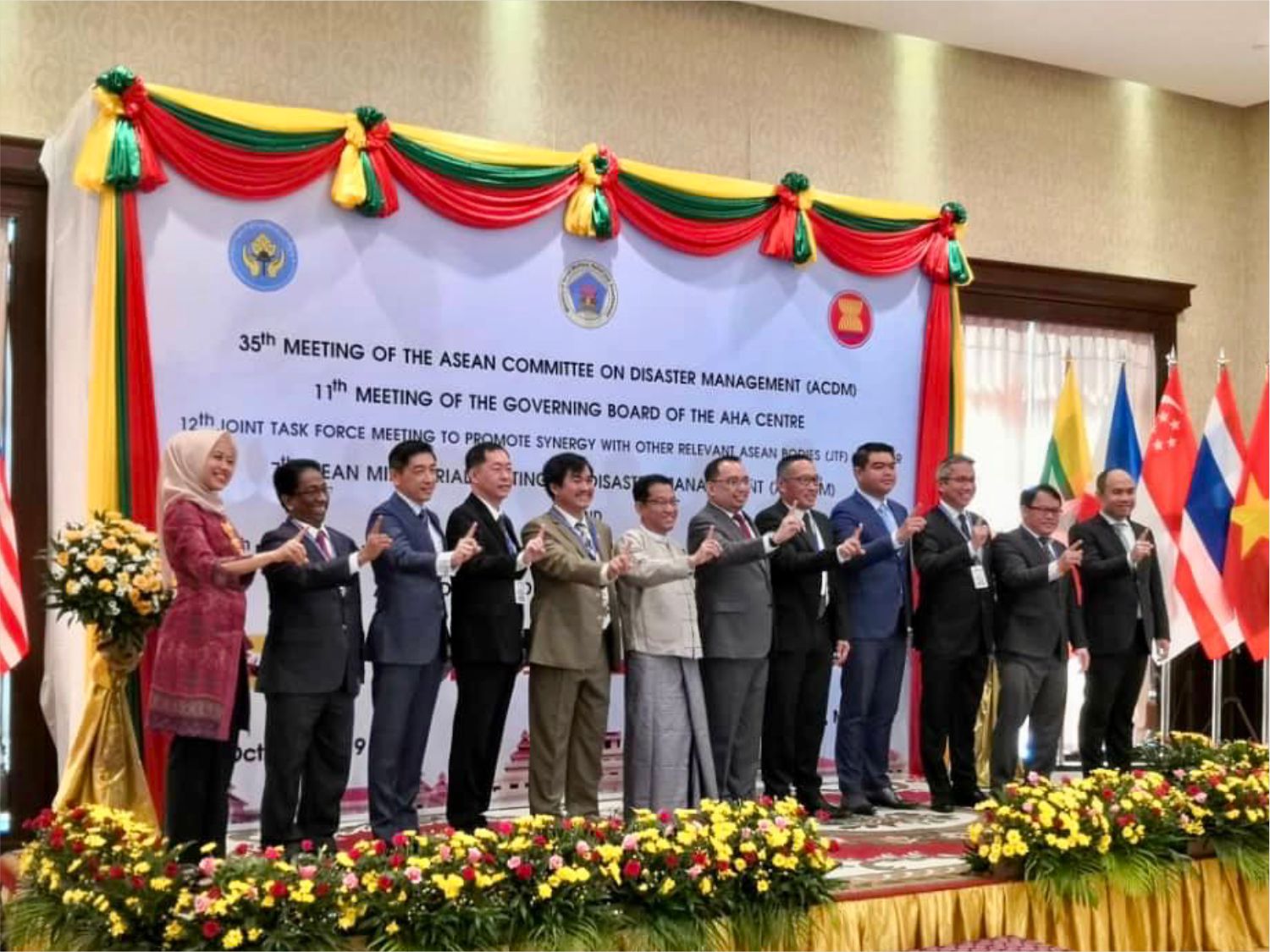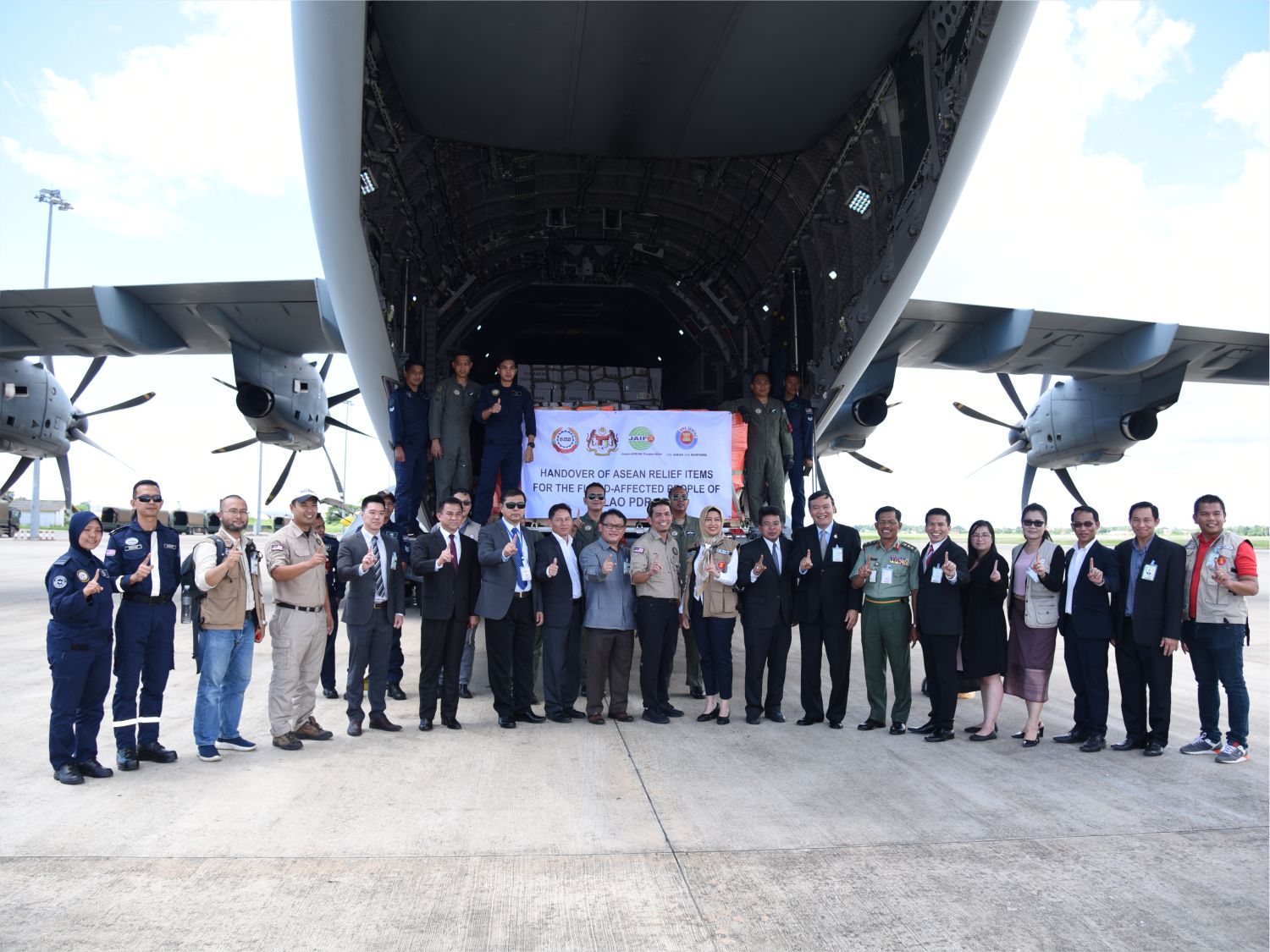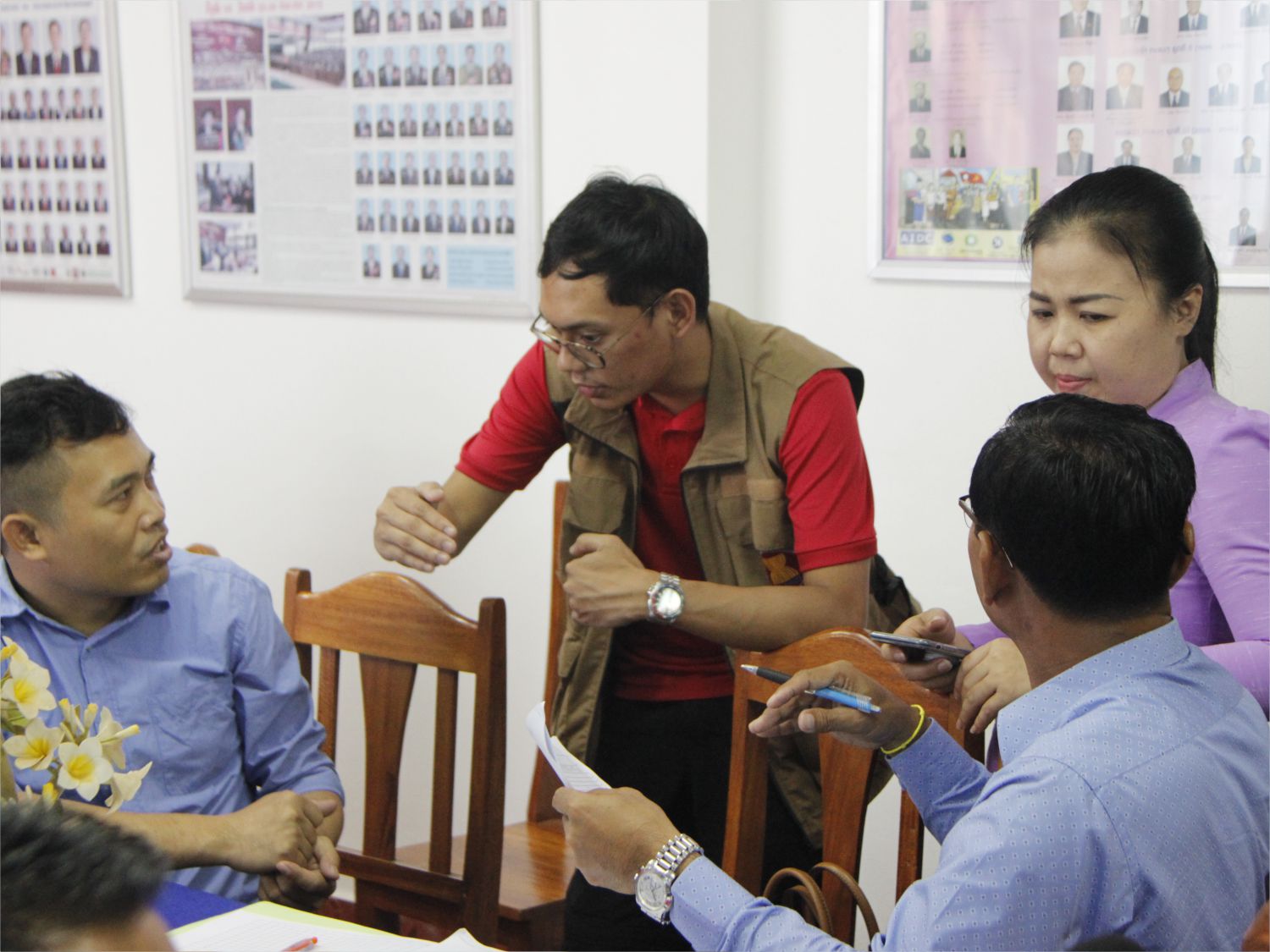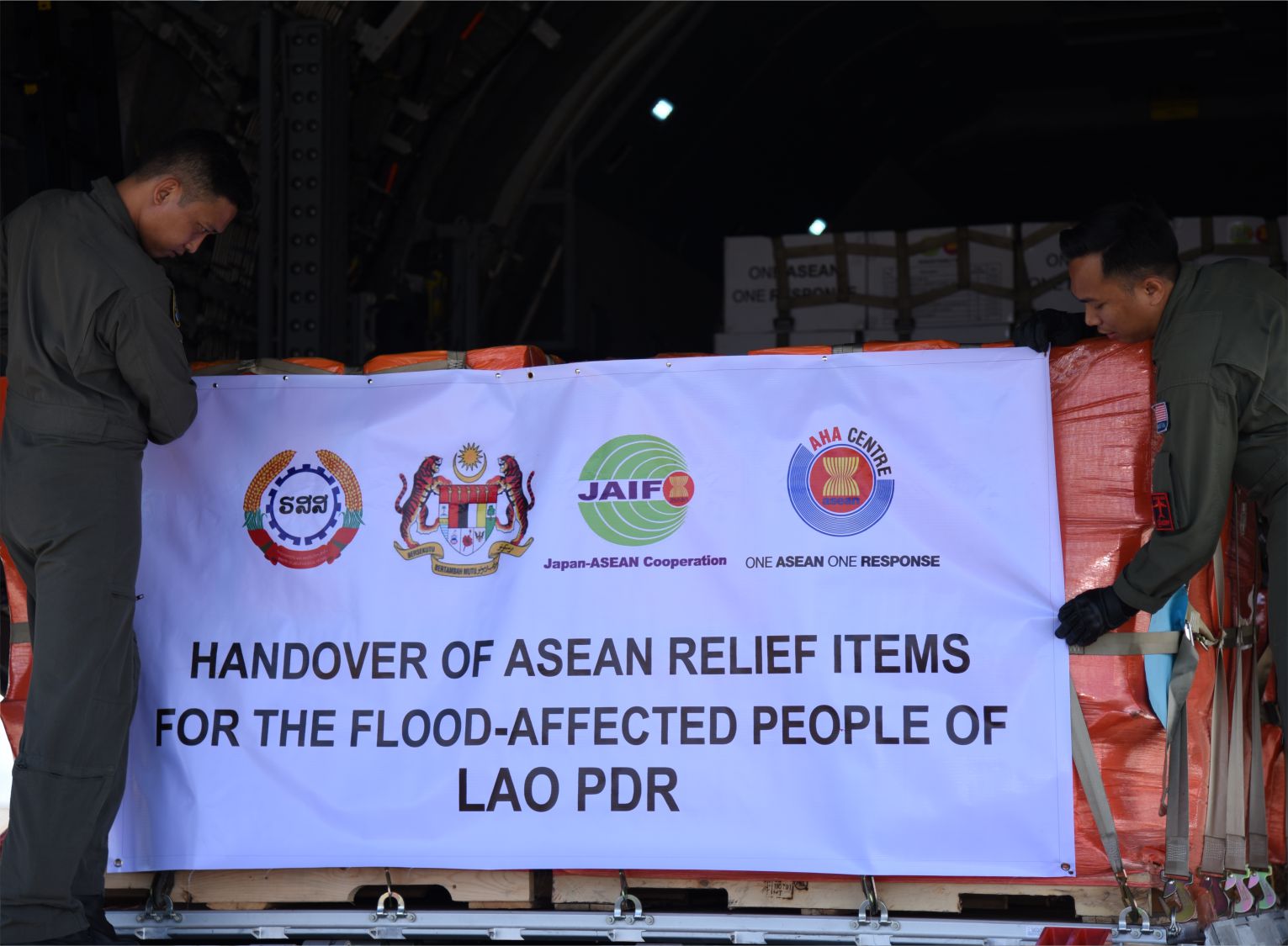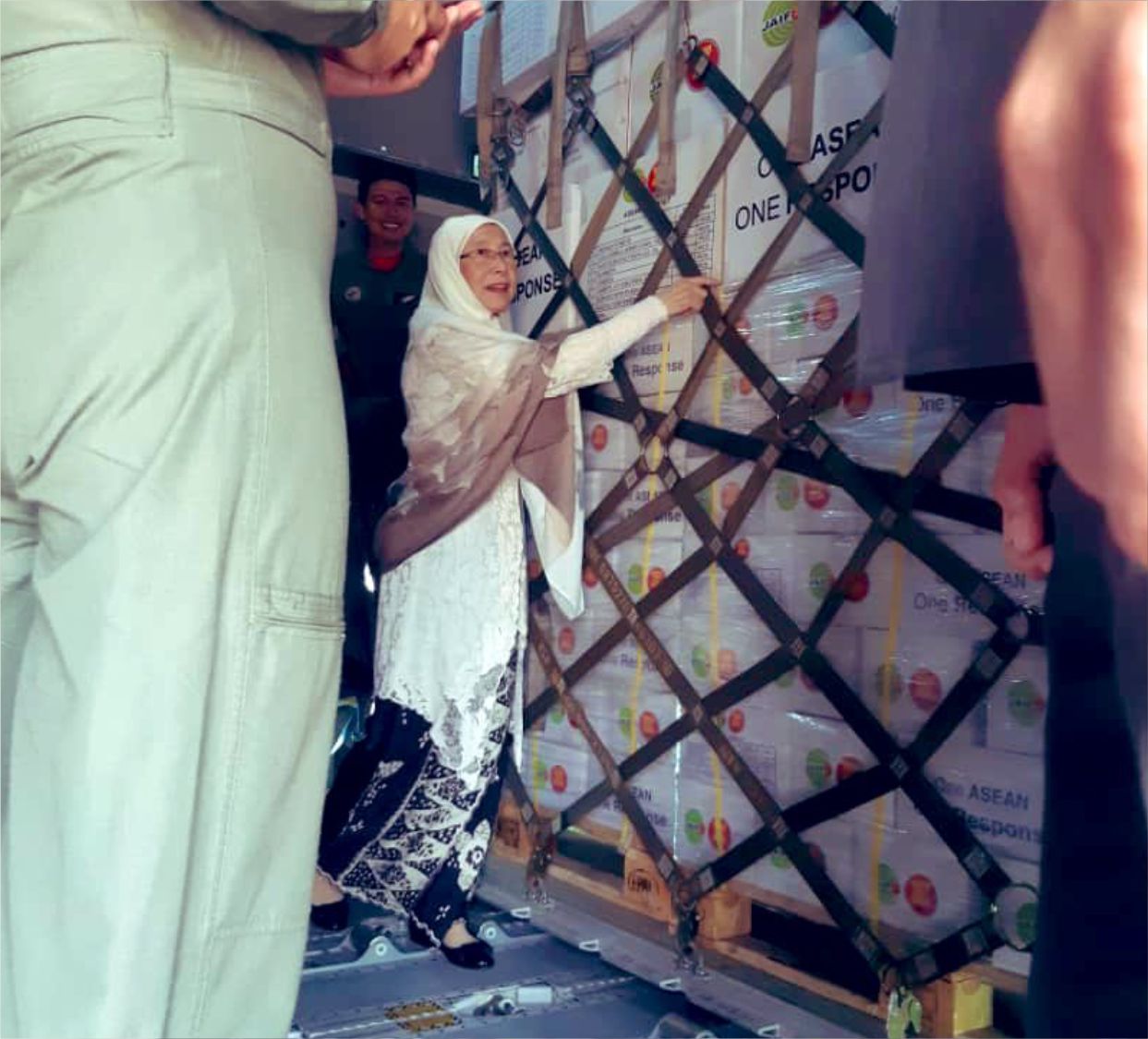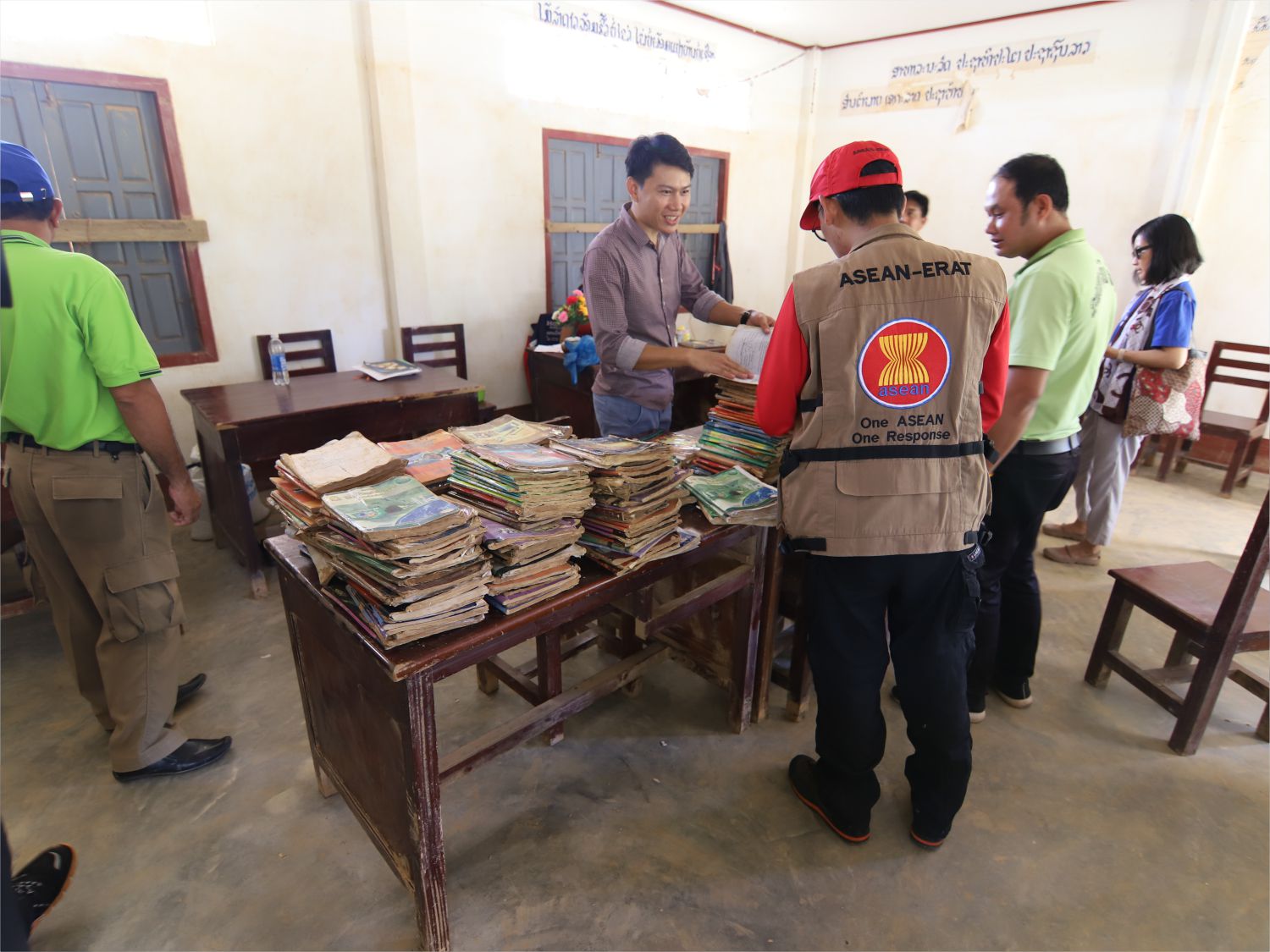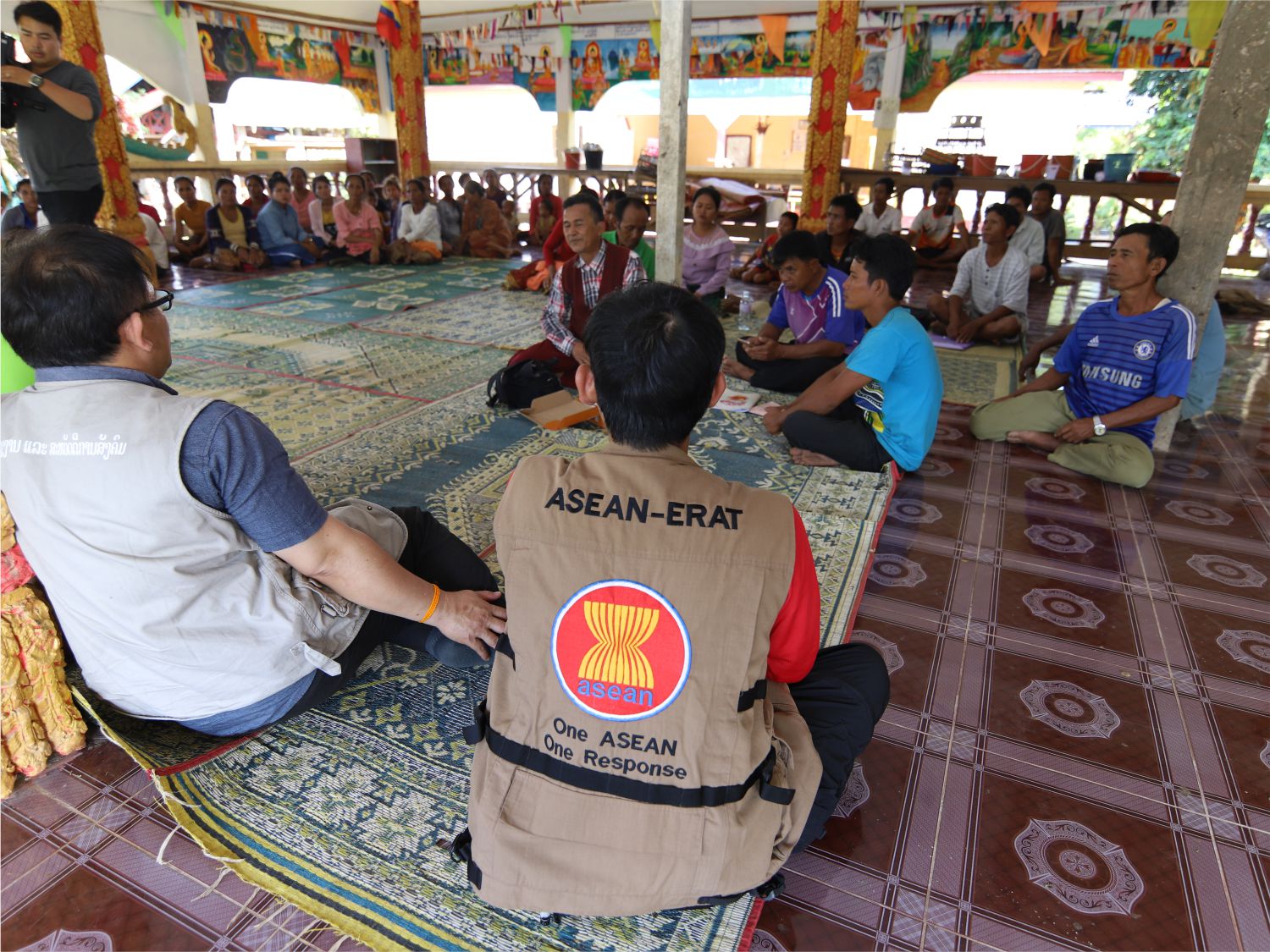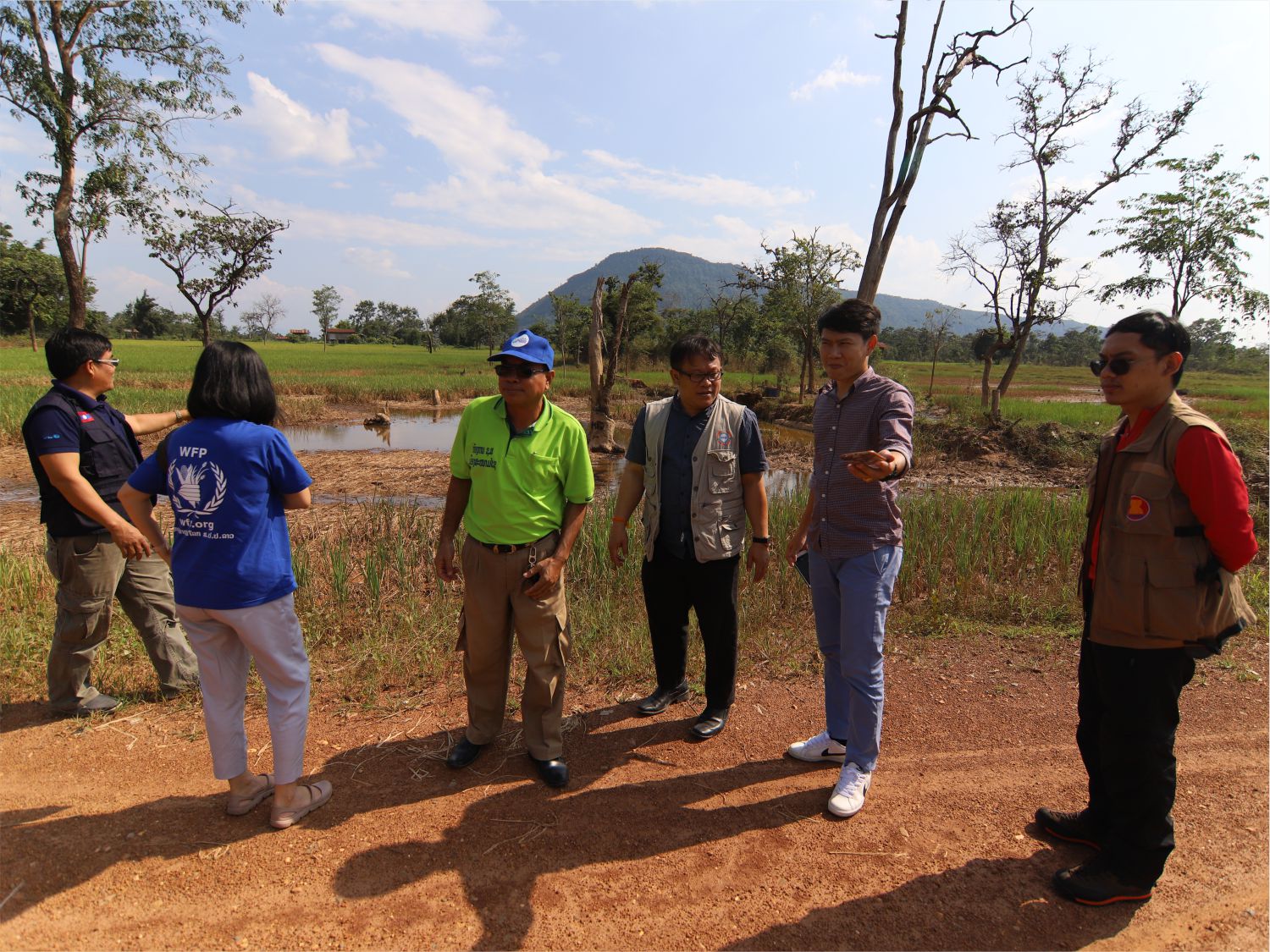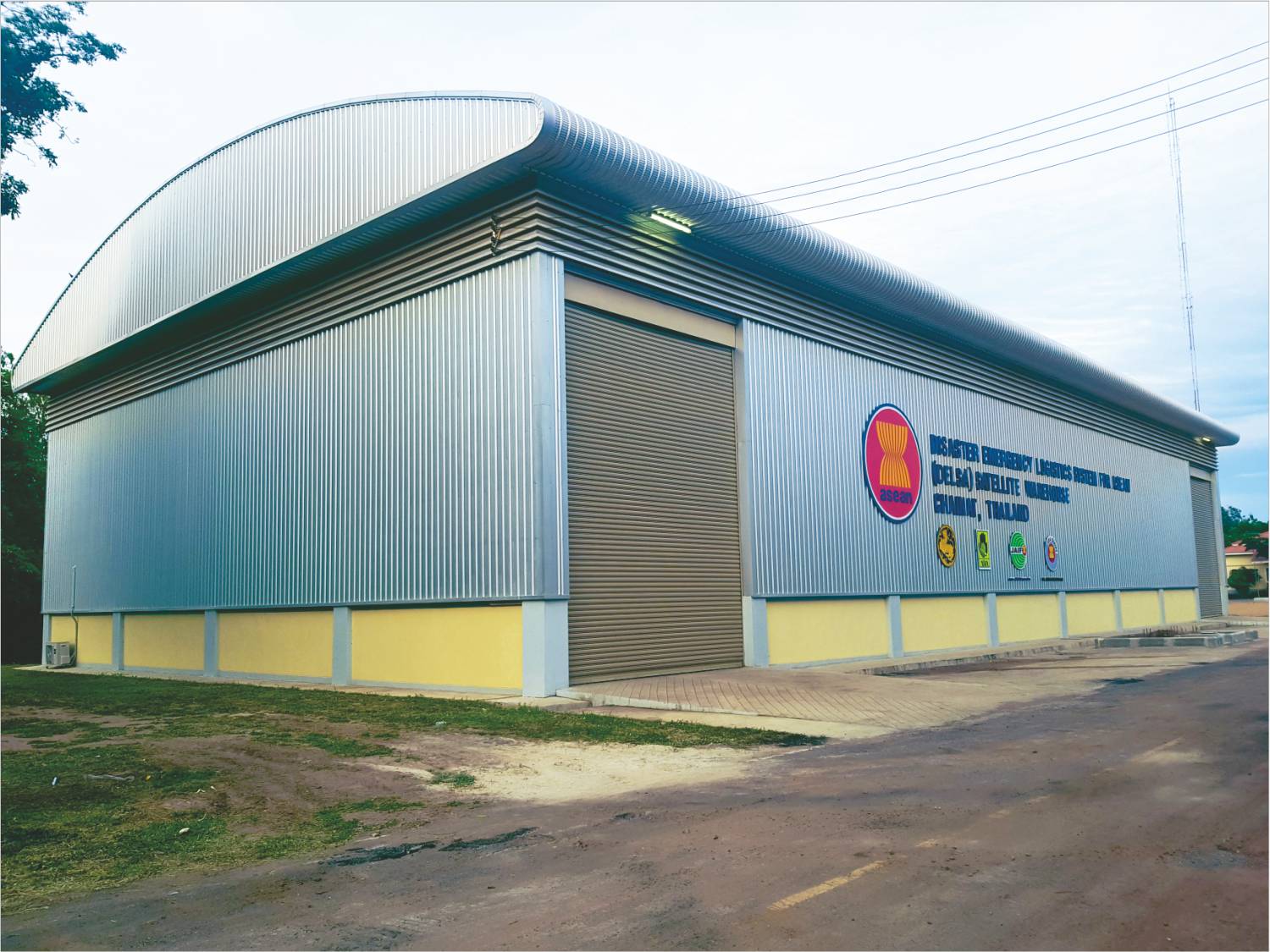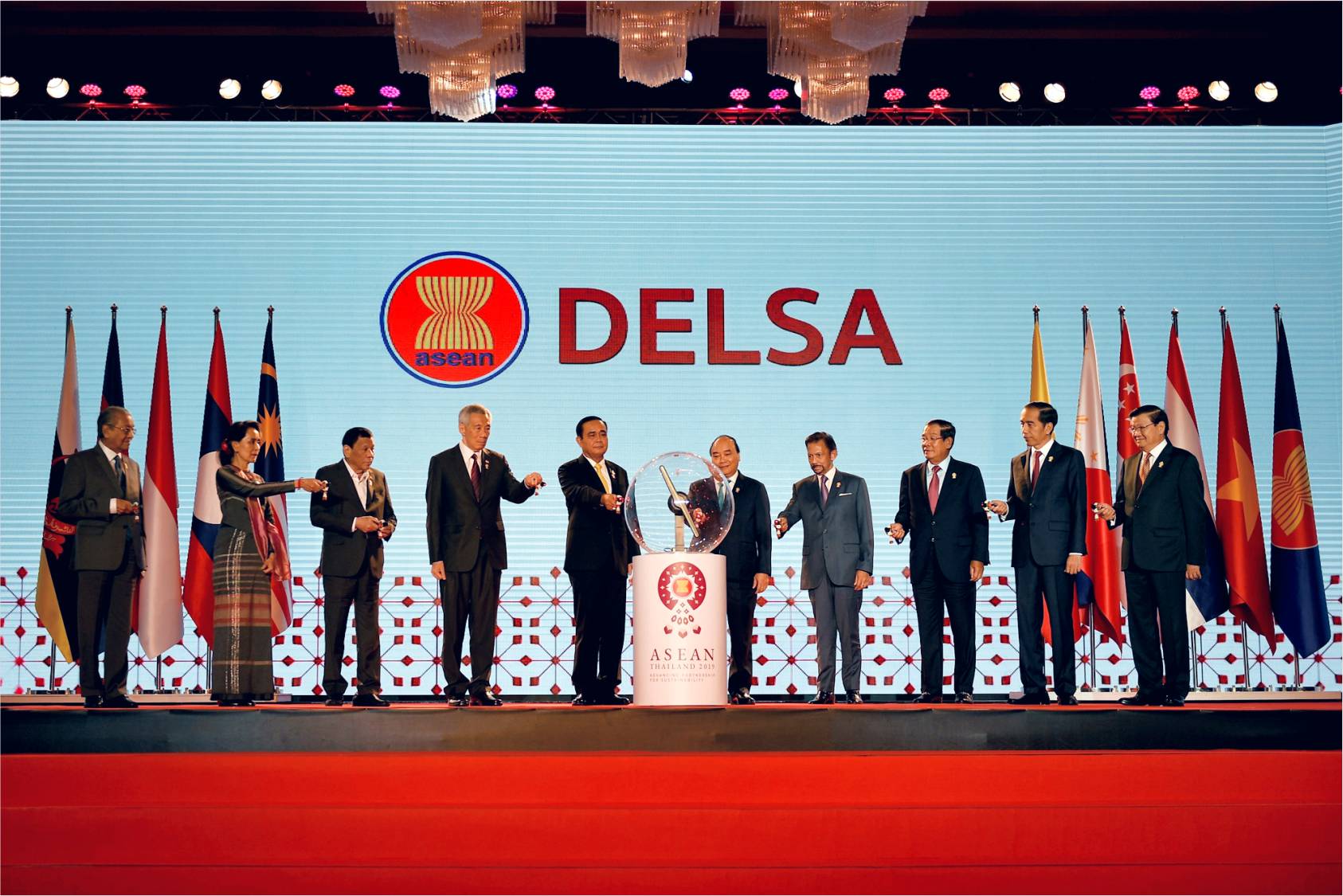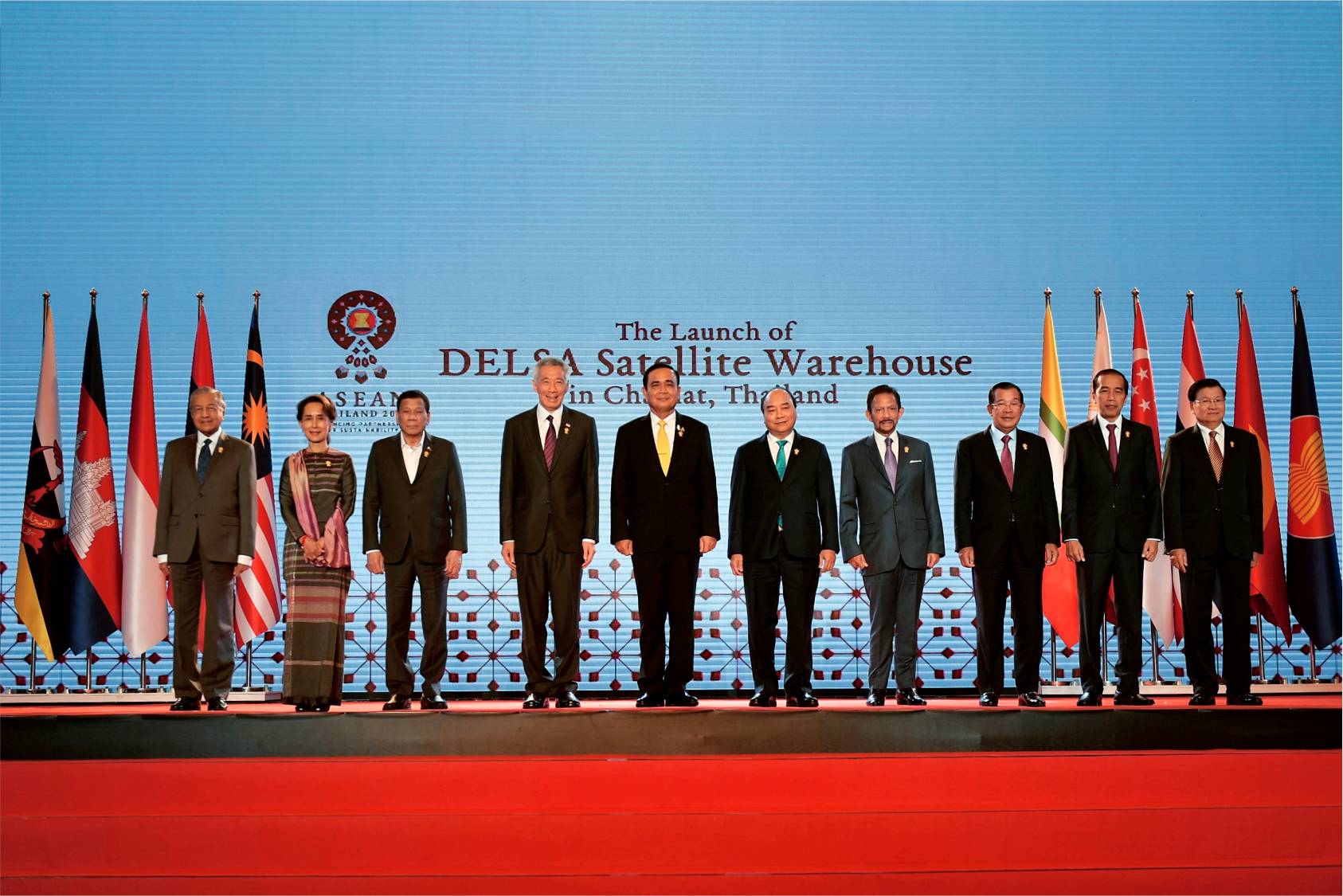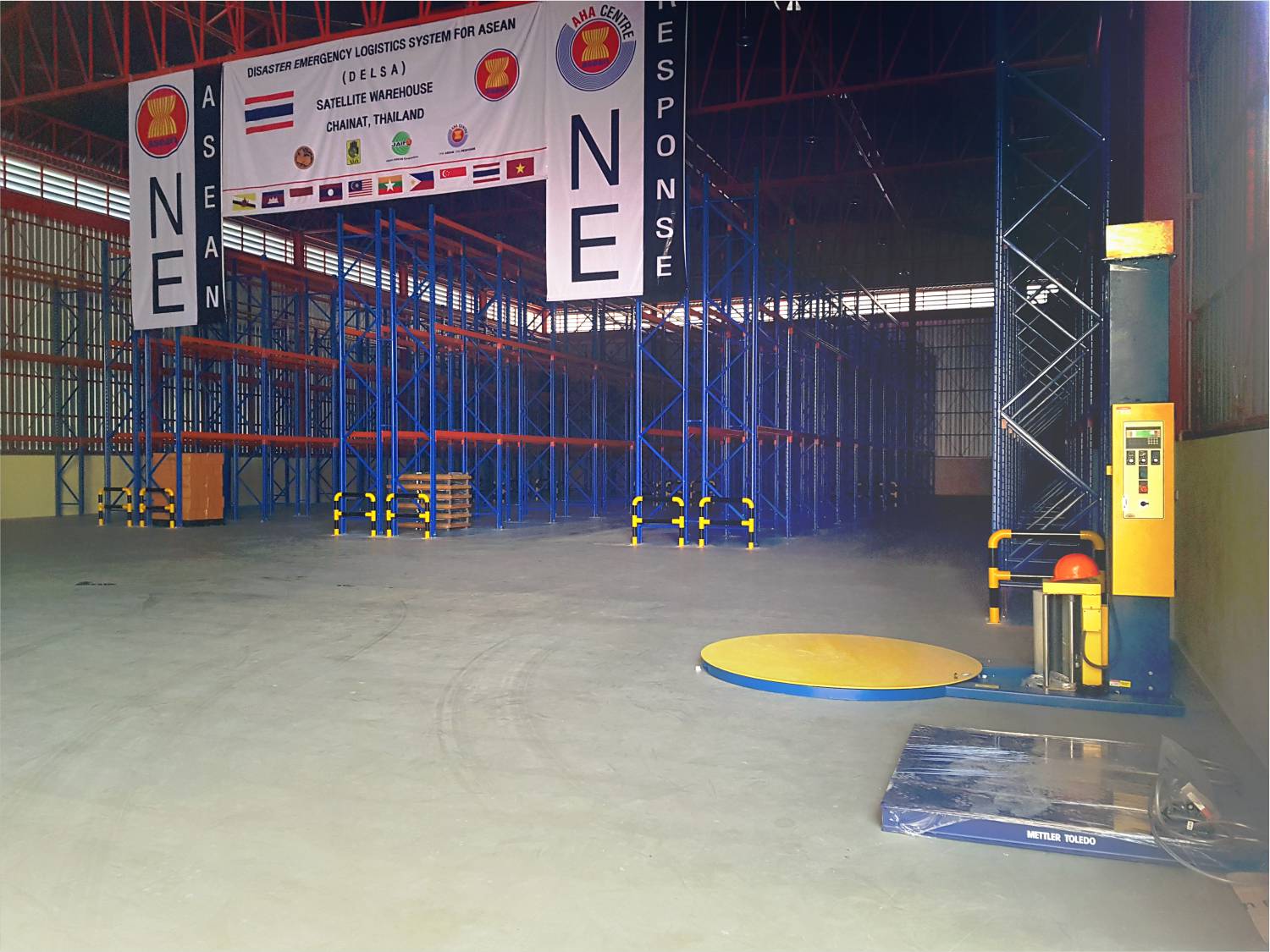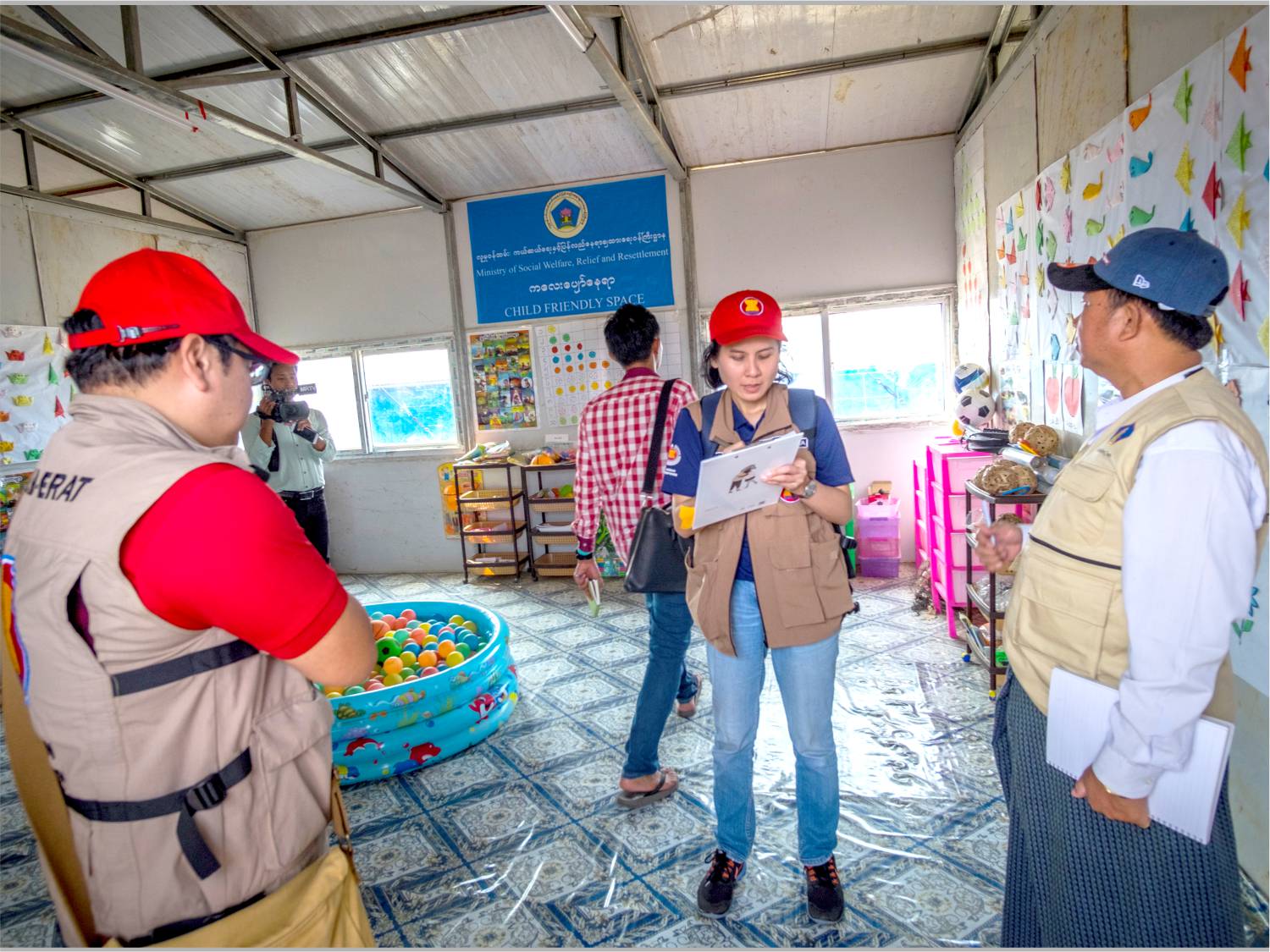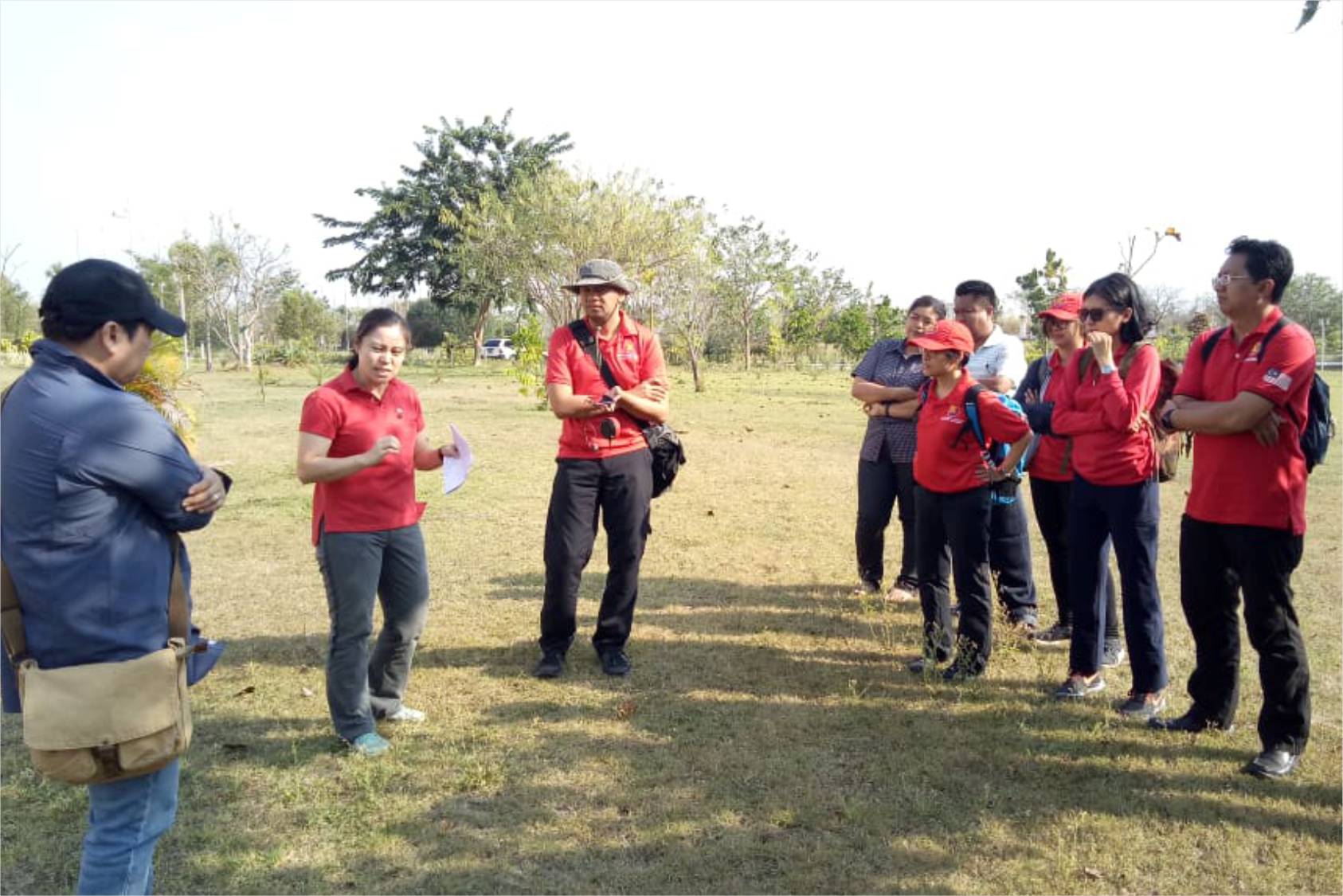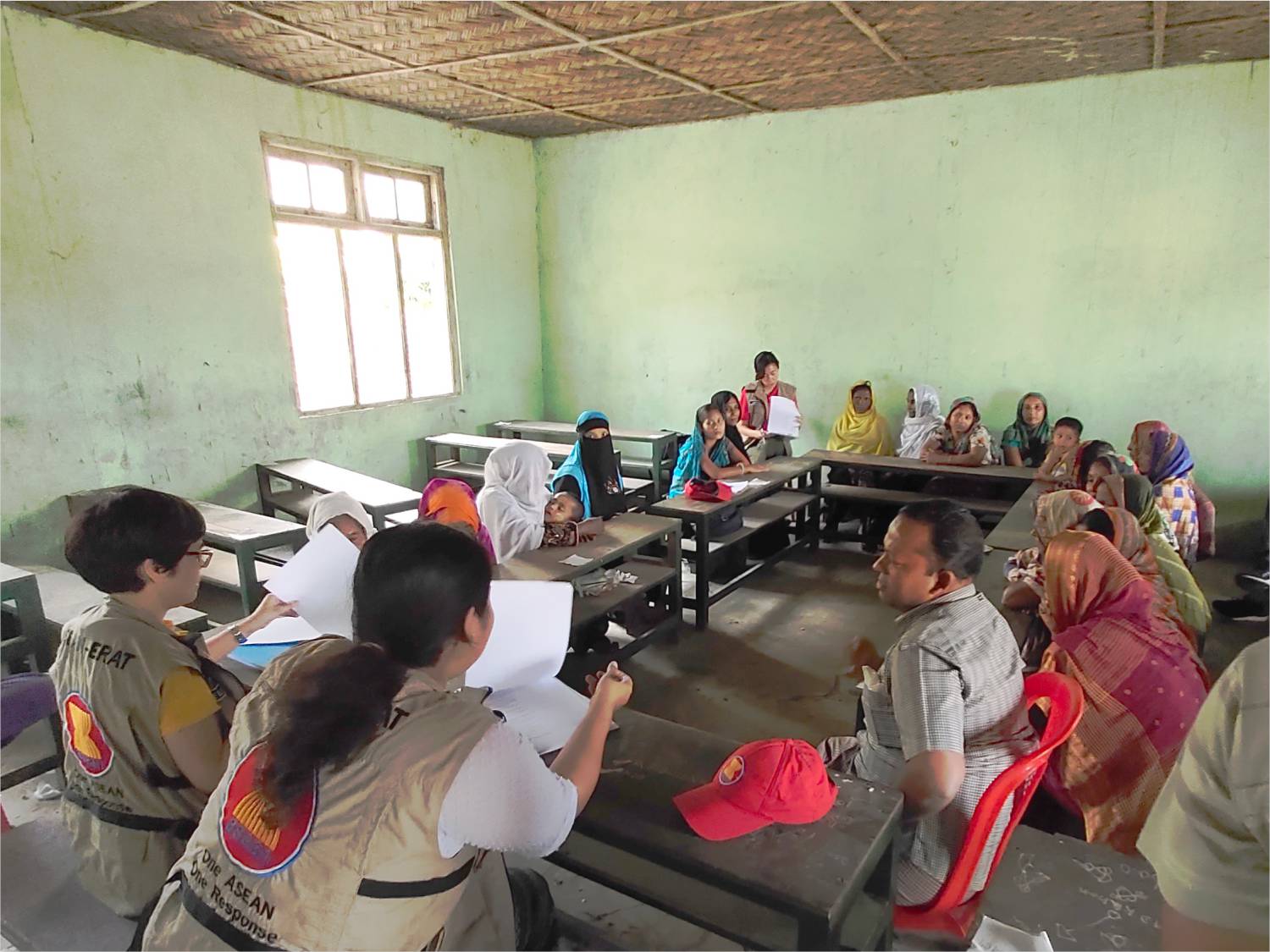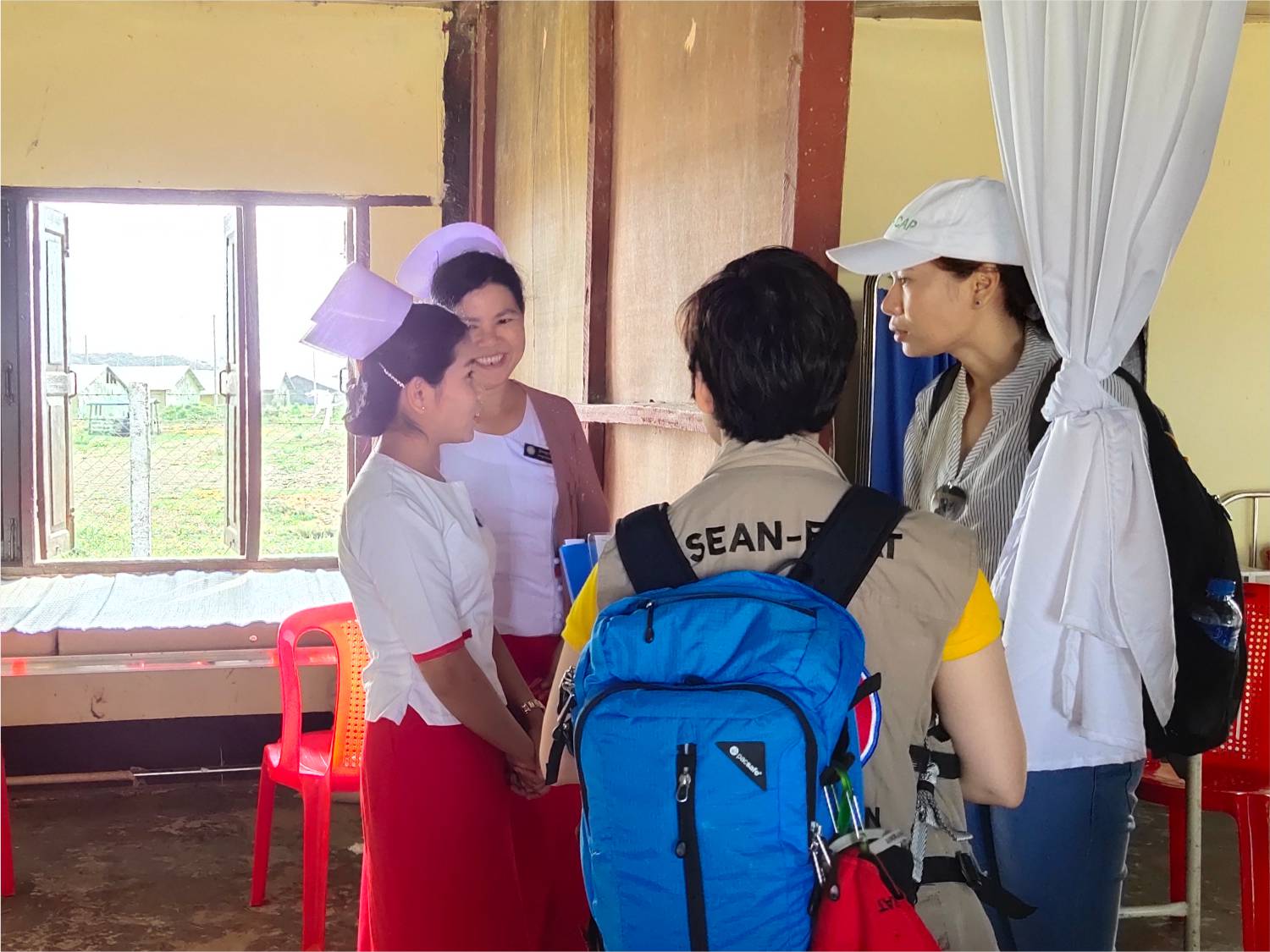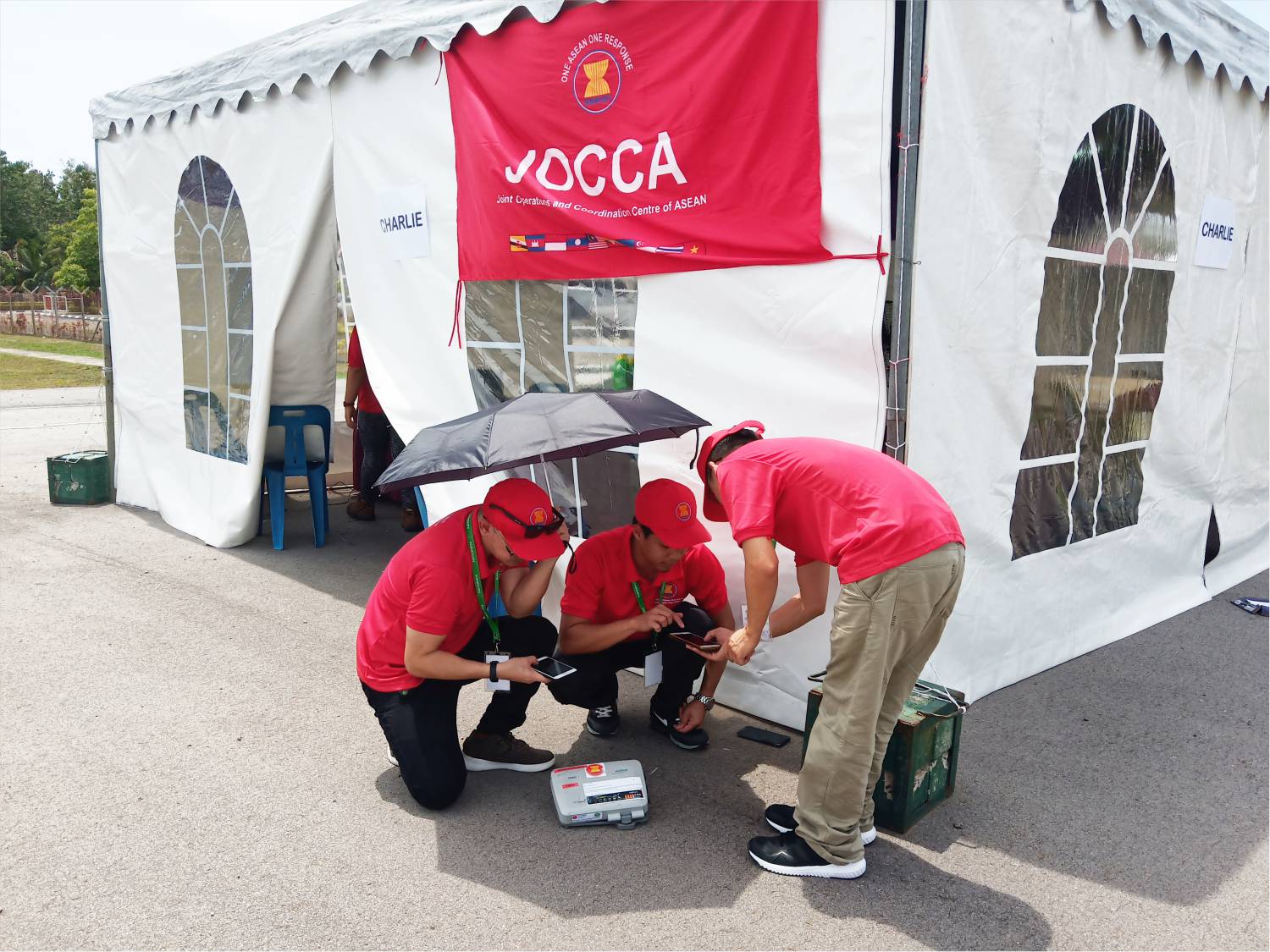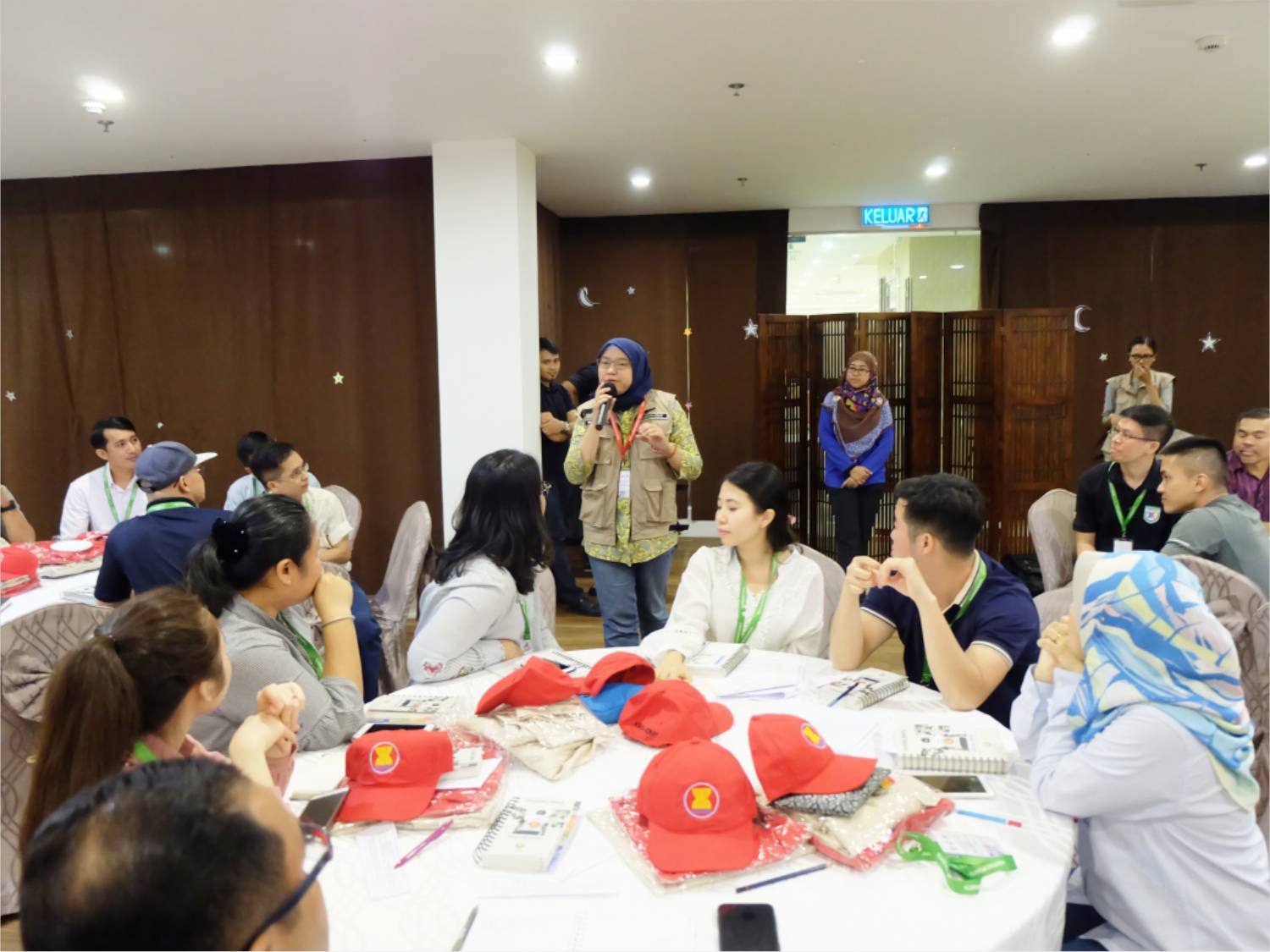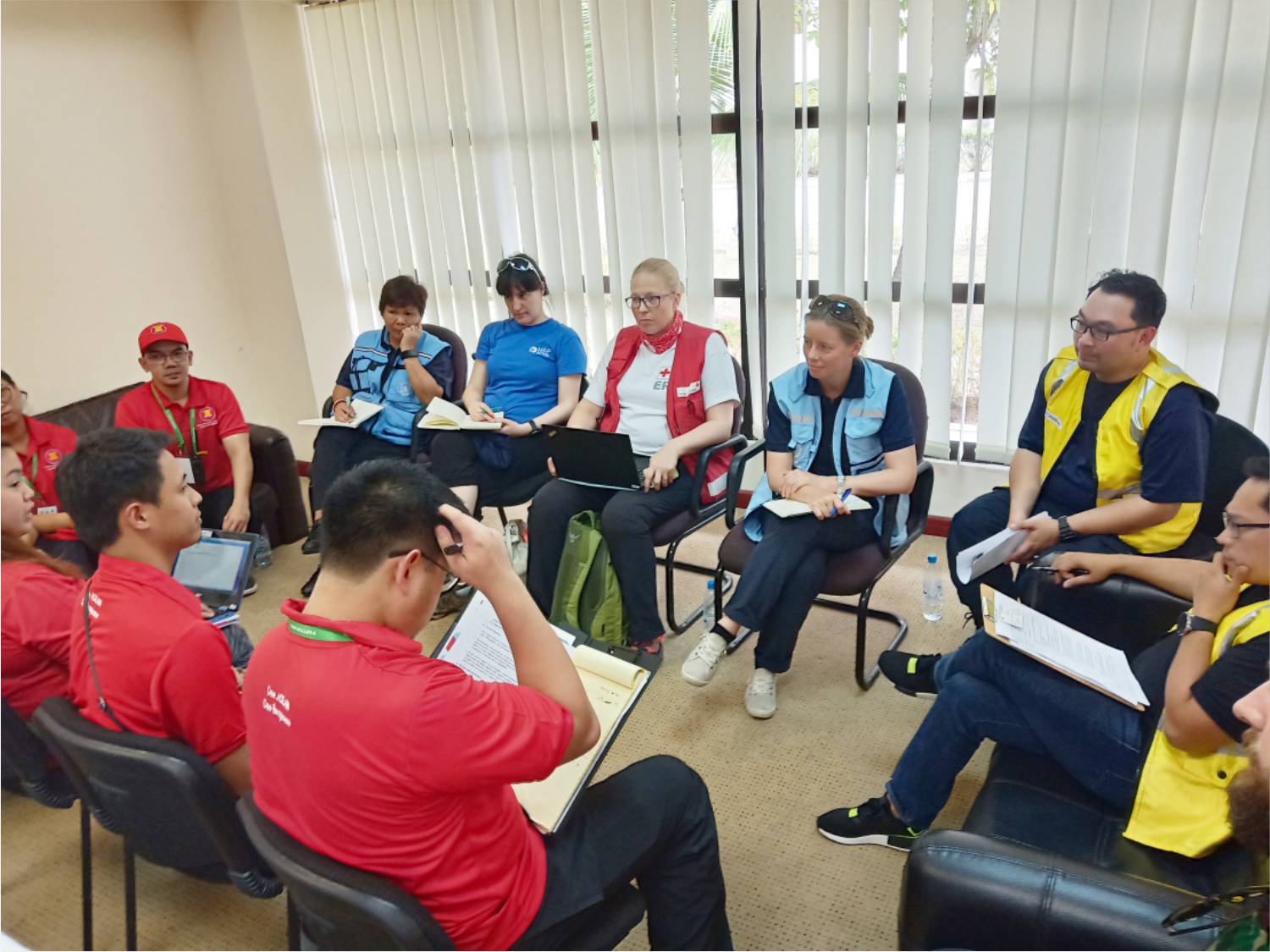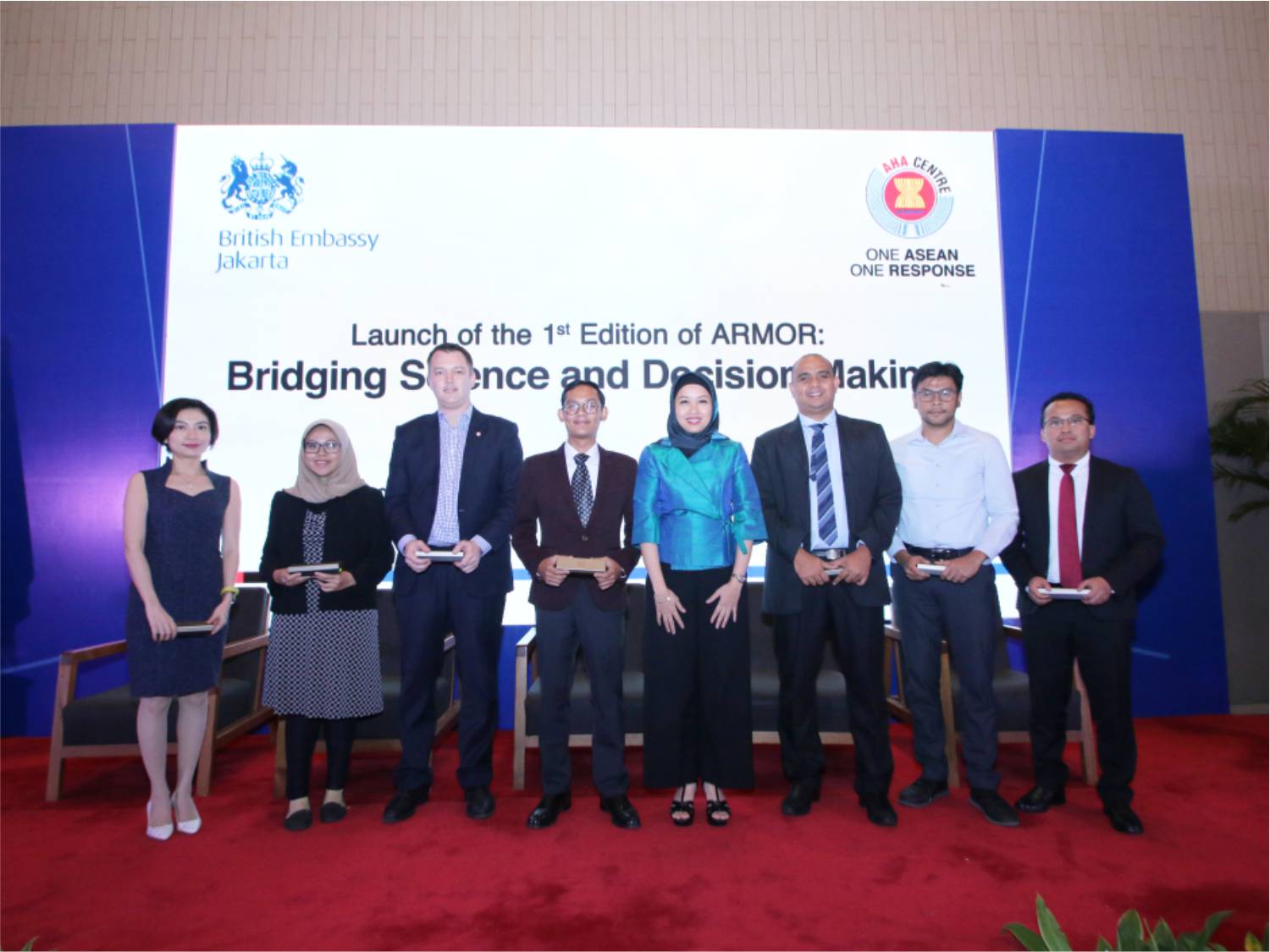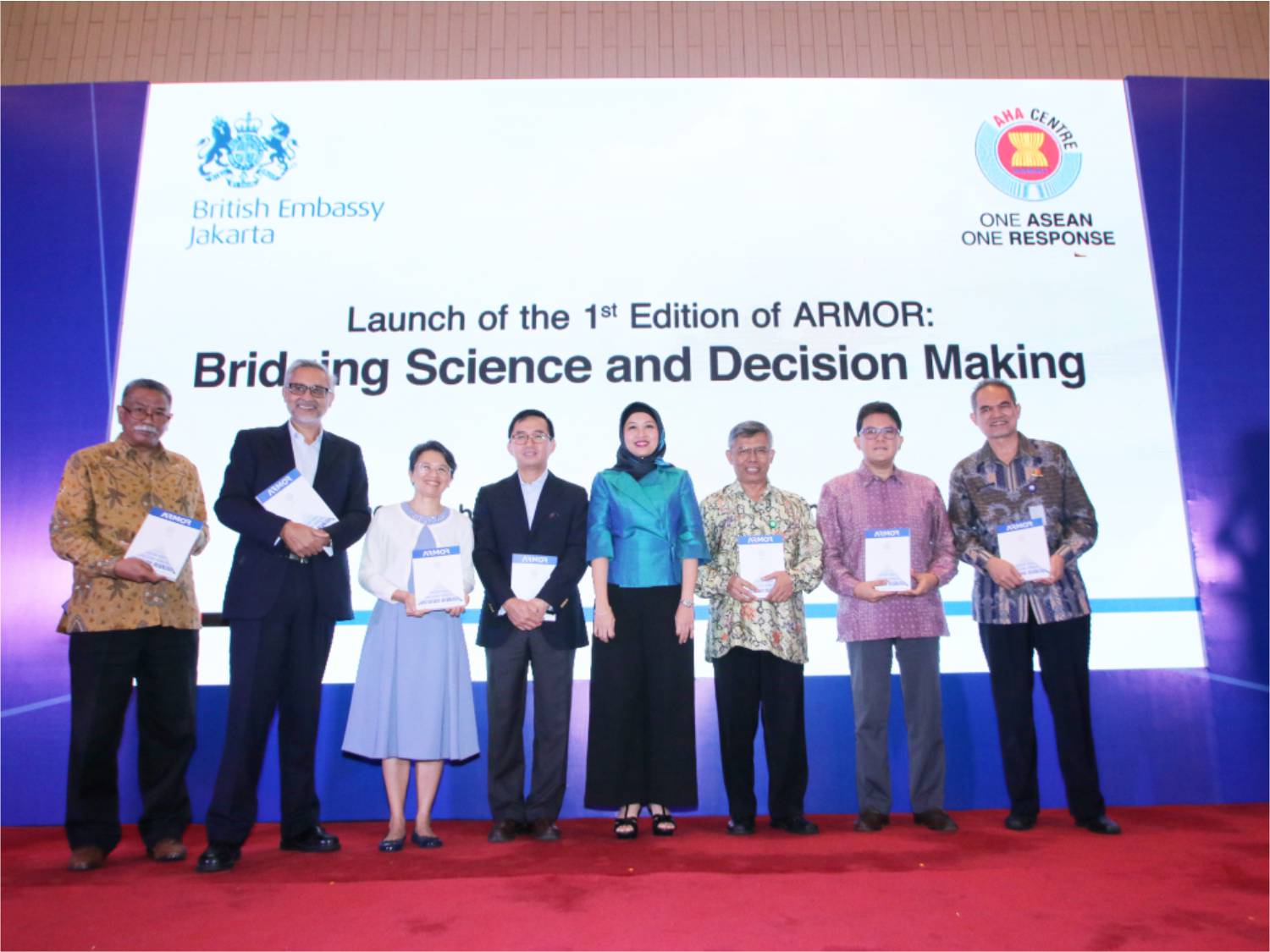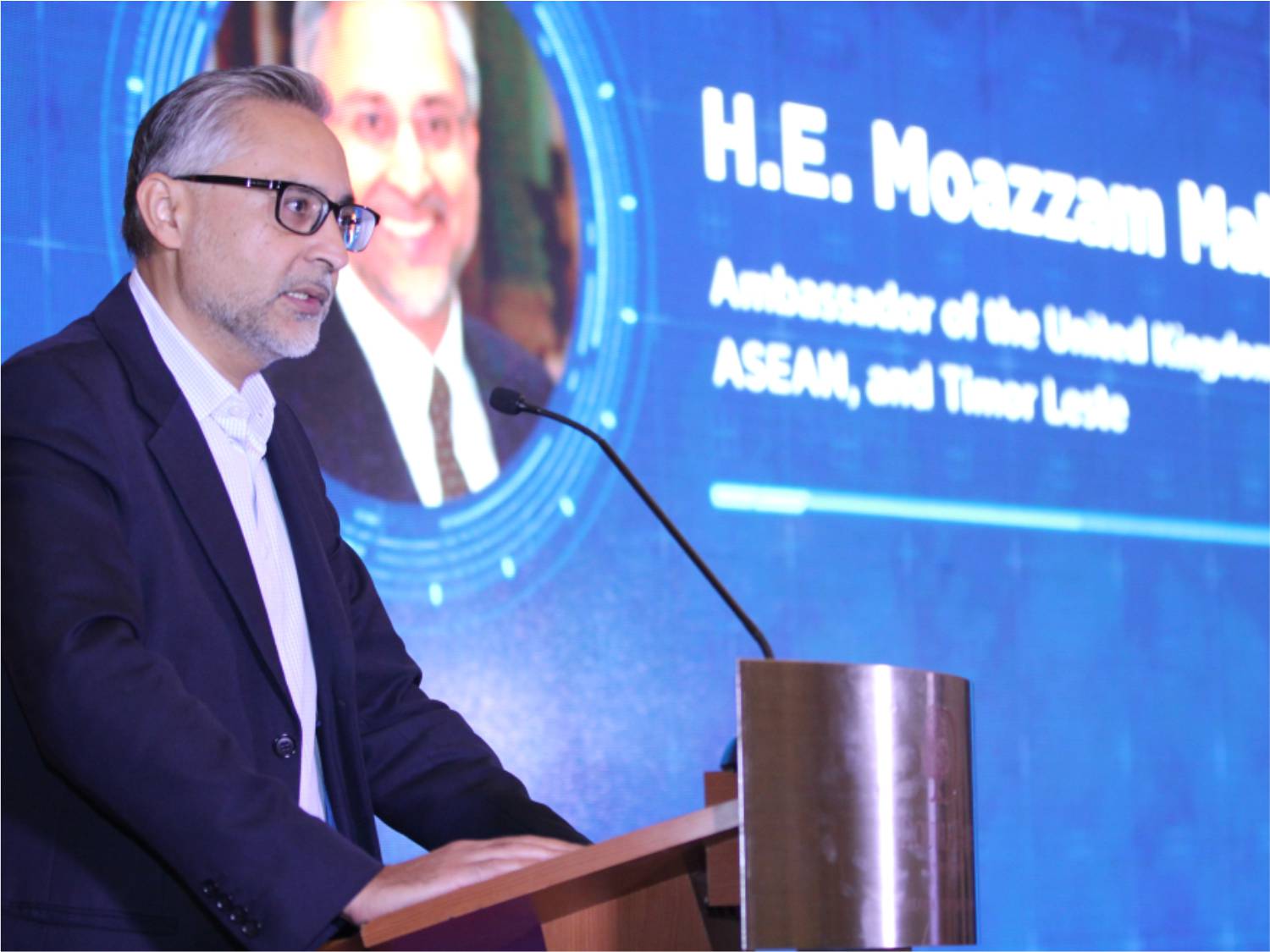Vol 56 – 11TH MEETING OF THE GOVERNING BOARD OF THE AHA CENTRE

11TH MEETING OF THE GOVERNING BOARD OF THE AHA CENTRE
October the 2nd 2019 saw the 11th Meeting of the Governing Board of the AHA Centre take place in Nay Pyi Taw, Myanmar, which was followed by the 7th ASEAN Ministerial Meeting on Disaster Management (AMMDM) and the 8th Meeting of the Conference of the Parties (COP) to the ASEAN Agreement on Disaster Management and Emergency Response (AADMER) on October 4th. To round of the busy schedule, the Governing Board convened back-to-back with the 35th Meeting of the ASEAN Committee on Disaster Management (ACDM) and the 12th Meeting of the ASEAN Joint Task Force to Promote Synergy with Other Relevant ASEAN Bodies on Humanitarian Assistance and Disaster Relief – all of which took place between 1 – 3 of October.
The Governing Board received an update from the AHA Centre regarding a range of activities and programmes that had taken place throughout the previous period, including updates on such things as preparations for the 2020 ASEAN Regional Disaster Emergency Response Simulation Exercise (ARDEX-2020) with the Philippines, implementation of Level 2 ASEAN Emergency Response and Assessment Team (ASEAN-ERAT) courses, and the development of the ICT Roadmap on Disaster Management for 2025 and Beyond. The Governing Board also received updates on the development and launching of the Disaster Emergency Logistics System of ASEAN (DELSA) Satellite Warehouses – in both the Philippines and Thailand – that took place during the middle of 2019.
Of particular note to the Governing Board was the ongoing ASEAN Village recovery project, implemented by the AHA Centre in Palu, Central Sulawesi, Indonesia. This project has utilised generous financial support from Brunei Darussalam and the Philippines to support communities affected by the earthquake, tsunami and liquefaction disasters that struck the region in September 2018. The AHA Centre also appreciated support from the Government of Australia to strengthen the project’s management, and highlighted the potential of further support arriving from other parties.
The Governing Board also encompassed and afforded support to the AHA Centre’s plan to – as part of its 8th anniversary – conduct a visioning exercise to re-think how the AHA Centre can further enhance its services to support ASEAN as the primary regional coordinating agency on disaster management and emergency response. The effort would include workshops to determine if AHA Centre could contribute towards the provision of humanitarian assistance during human-induced disasters. The Governing Board maintained that the AHA Centre must focus on its existing mandates through enhancing its core services in disaster management and emergency response, as well as ensuring synergy, adaptability and readiness of its systems, procedures and skills to potentially provide humanitarian assistance to other types of disasters.
The meeting also resulted in the Governing Board adopting the Financial Status of the AHA Centre, as well as the AHA Centre Budget for 2020. Recent successful external audits were also highlighted, with the AHA Centre successfully completing such audits for all externally funded projects through the Japan-ASEAN Integration Fund (JAIF) as well as the AHA Centre Fund. Options for strengthening financing mechanism will also be explored, to help ensure the region is more self-reliant in the funding of emergency response operations and deployment of ASEAN-ERAT.
Written by : William Shea | Photo Credit : AHA Centre
- Published in Highlight
Vol 55 – ASEAN RESPONDS TO FLOODS IN LAO PDR

ASEAN RESPONDS TO FLOODS IN LAO PDR
The formation of Tropical Storm ‘Podul’ was first identified on August 27, 2019, with the AHA Centre intensifying its monitoring efforts based on the potential size and impact of the storm. As September arrived, so too did a large Low Pressure Area (LPA) and a Tropical Depression – known as Tropical Depression ‘Kajiki’. The combination of the LPA, tropical storm and tropical depression resulted in significant rainfall and flooding across 6 provinces in Lao PDR – Champasak, Saravan, Sekong, Savannakhet, Attapeu, and Khammouan. The AHA Centre quickly stepped up to the call of support from the Government of Lao PDR, and responded through various means to support the affected communities of the ASEAN Member State.
Ready to operationalise the spirit of “One ASEAN, One Response”, the AHA Centre worked quickly to support the Lao PDR Government’s response through coordination, information management, rapid needs assessment, and deployment of ASEAN relief items from the region’s Disaster Emergency Logistics System for ASEAN (DELSA) warehouse network. The AHA Centre’s In-Country Liaison Team (ICLT) was mobilised to coordinate the region’s response support, and also facilitated the handover ceremony of DELSA relief items in Vientiane on 12 September 2019. The relief items comprised of family kits (330), personal hygiene kits (2,596), kitchen sets (1,144), mosquito nets (1,400) and jerry cans (1,400), which were airlifted into the affected region by the A400M of the Royal Malaysian Air Force, from the DELSA regional stockpile in Subang, Malaysia.
The AHA Centre’s Information Management specialist and ICLT, together with representatives from the Ministry of Agriculture, Ministry of Public Works, Ministry of Education, and the Lao PDR Red Cross, also engaged in a National Joint Needs Assessment Planning Meeting implemented by the Director-General of Lao PDR’s Social Welfare Department in Vientiane. The AHA Centre worked collaboratively with in-country members of the ASEAN Emergency Response and Assessment Team (ASEAN-ERAT) to develop supporting tools and methods for the assessment efforts, to be translated into local language and provided to local staff for implementing the assessment in affected areas.
Flood waters began to subside on September 10, with conditions improving slowly through all affected provinces during the days that followed. The damage that remained was significant, with figures showing up to 89 bridges, 613 schools, 46 health centres and hospitals, 298 km of roads, 274,719 hectares of farmland, 574,742 livestock, and 36 reservoirs affected by the floods. Total damage is so far estimated at more than USD 10 million. Flooding and related hazards affected over 661,000 people, left 40,000 displaced, and resulted in the deaths of 18 souls. The AHA Centre’s Executive Director, Ms. Adelina Kamal, summed-up the region’s feelings when she spoke at the handover ceremony of DELSA relief items. “Our hearts and prayers are with the communities affected by the floods. The AHA Centre as a centre established by the ten ASEAN Member States, including Lao PDR, stands ready to enhance country-led response to alleviate the suffering of the flood-affected communities.”
Written by : William Shea | Photo Credit : AHA Centre
- Published in Highlight
Vol 54 – ASEAN STRATEGIC POLICY DIALOGUE ON DISASTER MANAGEMENT (SPDDM) 2019: BUILDING ASEAN’S RESILIENCY TO DISASTERS

ASEAN STRATEGIC POLICY DIALOGUE ON DISASTER MANAGEMENT (SPDDM) 2019:
BUILDING ASEAN’S RESILIENCY TO DISASTERS
Building on the success of 2018’s forum, the ASEAN Strategic Policy Dialogue on Disaster Management (SPDDM) 2019 turned its focus to the region’s resiliency in the face of disaster. Titled Building ‘ASEAN’s Resiliency to Disasters’, the 2019 SPDDM took place in Singapore on the 21st of August 2019, and was attended by some of the region and the world’s leading disaster management professionals. The event was co-organised by the ASEAN Secretariat, the AHA Centre, the Singapore Civil Defence Force (SCDF), and the Swiss Agency for Development and Cooperation (SDC), alongside the S. Rajaratnam School of International Studies as the forum’s knowledge partner.
In 2018, the SPDDM focused on “Strengthening a Disaster Resilient ASEAN through Effective Cross-Sectoral Cooperation and Innovation”, with the theme of enhancing ASEAN’s disaster management capabilities through multi-sectoral engagement. 2019’s SPDDM continued on this track, aiming to develop discussions on how ASEAN how partnerships contribute toward building ASEAN’s resiliency in times of disasters, in line with ASEAN’s theme of ‘Partnership for Sustainability’ under Thailand’s Chairmanship in 2019. This topic pushes to continue building on ASEAN’s achievements to enhance resilience for communities and other stakeholders across the region. As part of the day’s discussions, participants and speakers discussed ongoing efforts to realise the ASEAN Vision 2025 on Disaster Management, with the range of inputs to act as a reference in the upcoming development of the AADMER Work Programme 2021 – 2025.
The forum was opened by Dr Ko Ko Naing, the Director-General of the Department of Disaster Management of Myanmar as this year Chair of the ASEAN Committee for Disaster Management (ACDM), in which he highlighted the importance of partnerships in reducing losses from disasters, and that the SPPDM could form a platform in which stakeholders could share and exchange their knowledge on the issues faced. During the speech Dr Ko Ko Naing also noted that the operationalisation of “One ASEAN, One Response” forms a key step to further building ASEAN’s resiliency to disasters. Mrs. Josephine Teo, Ministry of Manpower and Second Minister for Home Affairs of Singapore, followed-on by encouraging governments to be more resilient in the face of climate change and natural disasters, while highlighting the importance of sufficient resources being allocated to government agencies for disaster management efforts. Mrs. Teo also highlighted the importance of community engagement – particularly teaching people about the dangers and threats they are exposed to and how to deal with them – while highlighting several initiatives used in Singapore to raise awareness and capacity for the community in disaster management.
Following interesting speeches from other key representatives and organisers of the forum, a high-level discussion then took place on the topic of ‘ASEAN Resiliency: Forging Partnerships For Future Challenges’. Panellists engaged in the fruitful discussion included Ms. Cristelle Pratt, Deputy Secretary-General of the Pacific Islands Forum Secretariat, Dr Jemilah Mahmood, Under Secretary-General for Partnership at the International Federation of the Red Cross and Red Crescent Societies (IFRC), and Mr. Olabisi Dare, Head of Humanitarian Affairs, Refugees, and Internally Displaced Persons Division at the African Union. These panellists brought interesting perspective from outside of the ASEAN region, and highlighted efforts being taken in their own regions that could be of value to ASEAN.
The following session titled ‘ASEAN, sustainable Development and Disaster Impacts’, raised some of the contexts, challenges and learnings that would be applied to the ASEAN region on disaster management. Speakers included Mr. Kaveh Zahedi, Deputy Executive Secretary of the United Nations Economic and Social Commission for Asia and the Pacific (UNESCAP), Ms. Lesley Jeanne Y. Cordero, Senior Disaster Risk Management Specialist from the World Bank Group, Mr. Darren Klemm, Commissioner of Department of Fire and Emergency Services in the State of Western Australia, and Mr. Teong How Hwa, Deputy Commissioner (Future Technology and Public Safety) at the Singapore Civil Defence Force (SCDF).
To round out the discussion sessions, the third thematic forum focused on “Adapting To Localisation as a New Norm In Humanitarian Response”, in which the AHA Centre’s Executive Director Ms. Adelina Kamal, moderated a range of participants through interesting insights on the application of local-based contexts and approaches to broad-scale disaster management efforts. The SPDDM was then capped-off with a range of questions and answer sessions regarding the content of earlier discussions and closing remarks from the Deputy Secretary-General of ASEAN for ASEAN Socio-Cultural Community (ASCC), Mr. Kung Phoak, that summed-up the day’s findings and the important points to be considered on behalf of the region as a whole.
Written by : William Shea | Photo : SCDF
- Published in Highlight
Vol 53 – THE LAUNCH OF DELSA SATELLITE WAREHOUSE IN THE PHILIPPINES

THE LAUNCH OF
DELSA SATELLITE WAREHOUSE
IN THE PHILIPPINES
With the soft opening of Thailand’s Disaster Emergency Logistics System for ASEAN (DELSA) Satellite Warehouse (as covered in the Column Volume 52) taking place in Chainat during June 2019, the beginning of July would see the launching of the second satellite warehouse – based in Camp Aguinaldo, the Philippines. Coinciding with the beginning of Disaster Awareness Month in the Philippines, the second facility – another link in the chain of emergency stockpile locations across ASEAN – was successfully launched on July 1, and attended by a number of key actors and contributors from throughout the ASEAN region.
The opening of this second warehouse finalises this aspect of the DELSA project, and marks the beginning of a new era for ASEAN disaster response efforts under One ASEAN, One Response, that aims to increase the speed and scale of disaster response efforts through the utilisation of innovations such as the stockpile warehouse system. The region now holds two key satellite outposts to support the primary warehouse in Subang, Malaysia, that will serve to significantly increase ASEAN’s capacity and effectiveness during disaster response situations in years to come. This point was highlighted by the AHA Centre’s Executive Director Ms. Adelina Kamal during her speech at the launch when she stated that “the DELSA network will scale up and speed up ASEAN’s response, as the satellite warehouses are closer to the disaster-prone countries. It will increase predictability of ASEAN’s response, and predictability of response is one of the key elements for a credible ASEAN’s response”.
The satellite warehouse development has been strongly supported by the Government of the Philippines, who allocated a dedicated warehouse inside Camp General Emilio Aguinaldo, Quezon City, for the purpose of pre-positioning stockpile for disaster response. Direct support was delivered by the Philippines’ Department of National Defense, who worked to convert a section of the Armed Forces of the Philippines – Logistics Command (AFP-LOGCOM) Depot to serve as the satellite warehouse at the aforementioned location. These efforts highlight the willingness of ASEAN Member State governments to work together for the benefit of the region, with governments of the Philippines and Thailand providing significant support to the DELSA project expansion.
Speaking at the opening ceremony, Under Secretary Ricardo B. Jalad, the Administrator of the Office of Civil Defense of the Philippines expressed his appreciation with the launch of the warehouse, “we are pleased that this DELSA (Disaster Emergency Logistics System for ASEAN) warehouse is now ready for operation today. This satellite warehouse is another enduring pillar that will support our declaration of ‘One ASEAN. One Response’ enabling us to heighten our emergency preparedness and increase our response capacity as a member state and together with the ASEAN members will respond to both large scale and medium scale disasters within and outside the ASEAN region”.
The second satellite warehouse will be co-managed by the AHA Centre and the Philippines National Disaster Risk Reduction and Management Council (NDRRMC) through the Office of Civil Defense (OCD). The effort is continuously supported by the Government of Japan through the Japan-ASEAN Integration Fund (JAIF), with the warehouse development across both the Philippines and Thailand evidencing the ongoing strength in partnerships and collaboration between the AHA Centre and its ASEAN national counterparts in disaster risk reduction and management.
H.E. Delfin Lorenzana, the Secretary of National Defense of the Republic of the Philippines, highlighted the collaboration between the national government and the regional organisation, “We commend our friends and partners in Asean and the AHA Center for tirelessly working the realization of regional emergency stockpiles as well as enhancing institutional capacity building, and communication awareness”.
“ALONE WE CAN DO SO LITTLE. TOGETHER WE CAN DO SO MUCH. LET’S CONTINUE OUR DELSA JOURNEY TOGETHER FOR ONE ASEAN, ONE RESPONSE”
Adelina Kamal
Executive Director of the AHA Centre
Written by : William Shea | Photo Credit : Office of Civil Defense of the Republic of the Philippines
- Published in Highlight
Vol 52 – SOFT LAUNCH OF DELSA SATELLITE WAREHOUSE IN THAILAND

SOFT LAUNCH OF
DELSA SATELLITE WAREHOUSE
IN THAILAND
A key aim for the AHA Centre – under the One ASEAN, One Response vision – is to increase the speed and scale of disaster response across the ASEAN region. Supporting and innovating current ASEAN disaster management processes forms a key element in such efforts, and significant attention has been afforded to increasing and expanding the region’s relief preparedness, with a focus to ASEAN’s stockpile of relief items, housed and coordinated through the Disaster Emergency Logistics System for ASEAN (DELSA) warehouse in Subang, Malaysia. Throughout the last two years, the AHA Centre has implemented plans to develop DELSA satellite warehouses in two other parts of the region, and in June 2019, the AHA Centre achieved its first satellite warehouse opening with the soft launch of a new facility in Chainat, Thailand.
The two DELSA satellite warehouses are located in Thailand and the Philippines, with both forming accessible, efficient and innovative options for the region to deliver much-needed relief items to communities affected by disaster anywhere in the region. They will operate in sync with the primary DELSA regional stockpile in Subang, Malaysia, balancing and coordinating supplies based on operational capacity and the needs of the surrounding region’s populations. The two satellite warehouses will be jointly managed between the host country’s National Disaster Management Organisation (NDMO) and the AHA Centre, and will utilise processes and procedures developed by the AHA Centre and NDMOs throughout the lead-up and development of the facilities.
The first of the DELSA Satellite Warehouses was launched in Chainat, Thailand on 23 June, 2019, with the launching ceremony forming part of the 34th ASEAN Summit in Bangkok, Thailand, attended by all ASEAN Leaders. Made possible through the support of the Japan-ASEAN Integration Fund (JAIF), Thailand’s warehouse will be co-managed by the Department of Disaster Prevention and Mitigation of Thailand and the AHA Centre, and is located at the Disaster Prevention and Mitigation Regional Centre (DPMRC) Region 16, Chainat. As part of the soft launch, ASEAN Leaders were invited on-stage to officiate the event, as part of the overall opening ceremony of the Summit.
With a full launching of both warehouses slated for 2019, this soft launch in Thailand forms the initial step of an exciting time for the ASEAN region’s efforts in disaster response. In a press statement released by the Thailand as Chair of ASEAN in 2019 during the 34th ASEAN Summit, “the Satellite Warehouse in Chainat Province will enable ASEAN, and particularly the AHA Centre in Indonesia, to more effectively pursue rapid mobilisation and distribution of relief items to disaster-affected ASEAN Member States in mainland Southeast Asia…… further strengthening ASEAN’s collective response to natural disasters under the “One ASEAN, One Response” across ASEAN”.
Written by : William Shea | Photo : AHA Centre
- Published in Highlight
Vol 51 – SUPPORTING RETURNING COMMUNITIES TO RAKHINE STATE

SUPPORTING RETURNING COMMUNITIES
TO RAKHINE STATE
The humanitarian crisis in Rakhine State, Myanmar, is complex and protracted in nature, requiring ongoing support and partnerships to facilitate the repatriation of communities displaced during preceding years. After in-depth discussions and planning, the AHA Centre was requested by the Government of Myanmar to assist its work in the repatriation process, resulting in the Centre and members of the ASEAN Emergency Response and Assessment Team (ASEAN-ERAT) undertaking preliminary needs assessments with the Government of Myanmar during the early stages of 2019. On May 27, 2019, the ASEAN Secretary-General and Myanmar’s Union Minister for Social Welfare, Relief and Resettlement met to discuss the results of the needs assessments, and determine plans for implementation processes to enhance a safe, dignified and voluntary community repatriation to the region.
It was during the 33rd ASEAN Summit, held on 13 November 2018 in Singapore, that the Heads of State/Government from ASEAN Member States expressed their readiness to support Myanmar in its ongoing repatriation efforts. The ASEAN Leaders also welcomed the invitation extended by the Government of Myanmar to the AHA Centre to deploy a needs assessment team, tasked to identify possible areas of cooperation in Rakhine State in order to facilitate the repatriation process. A terms of reference was collaboratively developed by the Department of Disaster Management of Myanmar (DDM Myanmar), the AHA Centre and the ASEAN Secretariat, with the developed objective of the Preliminary Needs Assessment aimed to assess the readiness of Reception and Transit Centres, including potential relocations sites, previously identified by the Government of Myanmar.
During March 2019, an ASEAN-ERAT team composed of ten members from Indonesia, Malaysia, Myanmar, Singapore, Thailand, the AHA Centre and the ASEAN Secretariat, were deployed to Myanmar. The mission began with a preparedness training and planning workshop in Nay Pyi Taw – jointly organised by the DDM Myanmar and the AHA Centre – and included a briefing on safety and security, team organisation and responsibilities, testing of communications procedures, and review of the repatriation plan and assessment tools. ASEAN-ERAT was supported by officials from DDM Myanmar, the ASEAN Secretariat, and two interpreters. The findings of the assessment and the Executive Summary of the report were then presented to the Director-General of DDM Myanmar, and a briefing provided to the Secretary-General of ASEAN regarding the outcome of the Preliminary Needs Assessment.
Given the complexity of crisis in Rakhine State, it was important for the region to provide objective, unbiased and constructive support to the Government of Myanmar to ensure strong repatriation processes for affected communities. Findings from the ASEAN-ERAT Preliminary Needs Assessment showed that the Government of Myanmar has put significant effort into its repatriation plan, including the preparation of facilities, humanitarian assistance and human resources. While ongoing efforts to repatriate displaced persons continue, ASEAN-ERAT identified options for strengthening reception and transit centres, as well as recommendations on information dissemination, and provision of basic services. These three areas of cooperation will valuably support the Government of Myanmar in the process, and stand as the ASEAN region’s key support mechanism through a positive working partnership with the Government of Myanmar.
“On behalf of the Government and the people of Myanmar, I am grateful to ASEAN for standing firmly with Myanmar, and for supporting repatriation through preliminary needs assessments. As one of our most trusted and supportive partners, Myanmar looks forward to continuing working with ASEAN and continuing to strengthen our regional ties through these efforts.”
– Win Myat Aye, Union Minister for Social Welfare, Relief and Resettlement, Myanmar.
Written by : Grace Endina | Photo : AHA Centre, ASEAN-ERAT
- Published in Highlight
Vol 50 – THE 11TH ASEAN-ERAT INDUCTION COURSE

THE 11TH ASEAN-ERAT
INDUCTION COURSE
Following the success of the previous courses, the AHA Centre conducted the 11th ASEAN Emergency Response and Assessment Team (ASEAN-ERAT) Induction Course to train a new group of disaster responders ready for deployment across the ASEAN region. The Level 1 course took place in Bandar Seri Begawan, Brunei Darussalam, from the 8th to the 15th of April 2019. After successfully completing the 100 hours of course materials and training, the thirty are now prepared to engage in disaster responses at any moment as part of the united One ASEAN, One Response movement.
The course’s 30 participants were made up of representatives from all 10 ASEAN Member States’ National Disaster Management Organisations (NDMOs), and other sectors, such as health, foreign affairs, etc. as well as civil society representatives from the AADMER Partnership a Group (APG), the International Federation of the Red Cross/Red Crescent Societies (IFRC), the ASEAN Secretariat, and staff of the AHA Centre. The 11th ASEAN-ERAT Induction Course was made possible through the strong support of National Disaster Management Centre (NDMC) of Brunei Darussalam, its own In-Country ASEAN-ERAT team, as well as funding support from the Japan-ASEAN Integration Fund (JAIF).
Alongside classroom sessions covering modules of information management, rapid assessment, logistics management, and coordination, there was also a 48-hour simulation exercise that adopted the scenario of a 7.2 magnitude earthquake in Metro Manila. This exercise was injected into the course to prepare and familiarise participants with the situation experienced during real disasters.
“Overall the course was well planned and executed within an interactive classroom sharing setting, as well as a realistic field simulation exercise. This made the learning more engaging and effective. Beyond learning about the technicalities, it was an excellent opportunity to learn and hear from fellow participants from the other NDMOs and organisations about their deployment experiences, as well as their country’s culture”, said Matthew Tay, a participant from the Singapore Civil Defence Force (SCDF).
The success of the 11th ASEAN-ERAT Induction Course was also possible with the engagement of partners from various organisations including MapAction UK, RedR Australia, the Pacific Disaster Center (PDC), the United Nations Office for the Coordination of Humanitarian Affairs (UNOCHA) and the IFRC.
During the course, three graduates of the ASEAN-ERAT Training of Trainers course played important roles as course facilitators, which formed a new innovation during the 11th ASEAN-ERAT Induction Course. “As a relatively newcomer in the area of disaster management, the Induction Course provided me with a compact yet insightful overview of the roles of an international response team during the occurrence of sudden on-set disasters” explained Akmal Aji from the NDMC of Brunei Darussalam.
“Even though many aspects of the course such as the simulation exercise was tough and energy-draining, I thoroughly enjoyed the whole experience, as it was rewarding to be learning a skill-set that can contribute to alleviating the hardships faced by people affected by the devastating impact of natural hazards” he continued.
Fittingly, Mr. Aji highlighted the importance of the engagement of all the different parties within the course, when he said that “The training wouldn’t have been as fun if it hadn’t been for the other participants and the course facilitators, who aside from being knowledgeable and helpful, ensured that the entire course was well-organised and carried-out successfully”.
Written by: Melya Wardhani | Photo : AHA Centre
- Published in Highlight
Vol 49 – THE LAUNCH OF ARMOR FIRST EDITION

THE LAUNCH OF ARMOR FIRST EDITION
The ASEAN Risk Monitor and Disaster Management Review (ARMOR) is the AHA Centre’s newest information publication – a journal that aims to combine science, policy recommendations, and review of actual practices in disaster management. ARMOR’s development is a primary element of the AHA Centre’s efforts to increase the ASEAN region’s knowledge and skills within the global disaster management field, with the first edition published during March 2019. To celebrate this significant achievement, the AHA Centre held ARMOR’s launching event on the 20th of March in Jakarta, Indonesia.
A key aim of ARMOR – is to bridge the gap between science and decision-making in disaster management, with the launch event opening discussions between scientists and decision-makers who were in attendance. The event was officially opened by the Deputy Secretary – General (DSG) of ASEAN for Community and Corporate Affairs – H.E. AKP Mochtan, the Ambassador of the United Kingdom to Indonesia and Timor Leste – H.E. Moazzam Malik, and the AHA Centre’s Executive Director – Ms. Adelina Kamal. Overall, over 100 guests attended the event, including representatives from ASEAN Member States, ASEAN Dialogue Partners, the British Embassy in Jakarta, senior officials of the Indonesian government, a range of AHA Centre partner organisations, academic and scientific community and journalists.
The importance of ARMOR for disaster management in the ASEAN region was reflected by DSG AKP Mochtan in his speech, in which he not only congratulated the AHA Centre for its work on the publication, but also highlighted the functionality of the publication for regional disaster managers and decision-makers.“I would like to congratulate the AHA Centre for its tremendous work in providing a critical platform to bridge science and decision making in the region. The launch of ARMOR is an auspicious critical step forward to building knowledge in the ASEAN community and a valuable opportunity for ASEAN to re-examine our evidence-based decision-making processes. As one of the most highly vulnerable regions to catastrophic disasters, ASEAN has no other alternative but to work toward institutionalising resilience among its communities and peoples.”
During the event, sections from the 10 chapters of ARMOR’s first edition were also discussed by regional disaster management professionals who contributed to the writing, including Dr. Mizan Bisri of the United Nations University Institute for the Advanced Study of Sustainability and Mr. Lawrence Anthony Dimailig of the AHA Centre. The discussion panel – moderated by Said Faisal, the former Executive Director of the AHA Centre who also served as a member of the Board of Editors of ARMOR – gained significant insights and feedback from guest experts such as Dr. Allistair Cook from the Rajaratnam School of International Studies in Singapore, and Mr. Ray Shirkhodai, the Executive Director of the Pacific Disaster Center based in Hawaii.
The success of the launching, and importance of ARMOR overall was reaffirmed by Executive Director of the AHA Centre, Ms. Adelina Kamal during her speech in which she stated that “ARMOR aims to put science at the centre of decision-making process. We are very pleased to launch ARMOR, and hope that the report will be beneficial for our stakeholders to address disaster management across the region”. Ms. Kamal also expressed gratitude to all those involved, reminding all in attendance that “the resources required to develop the ARMOR report are not those of the AHA Centre’s alone, but from the active contribution and participation of the authors, reviewers, editors, and partners of the AHA Centre”.
Written by: Wiliam Shea | Photo : AHA Centre
- Published in Highlight
Vol 48 – TACKLING TYPHOONS PREPAREDNESS AND SAFETY TIPS

TACKLING TYPHOONS
PREPAREDNESS AND SAFETY TIPS
The Pacific typhoon season poses an annual threat to the ASEAN region, with Member States such as Lao PDR, Thailand, Viet Nam, and in particular the Philippines often experiencing the brunt of large typhoons and tropical storms – usually between the months of May to October. Numerous typhoons and tropical storms also form in the Northern Pacific (Bay of Bengal) region, often striking Myanmar and other nearby nations from the west of ASEAN. 2018 displayed the potential impact of such events, with Typhoon Mangkhut and Tropical Storm Son Tinh affecting ASEAN communities, not only through the initial impact of the storms, but also the resulting disasters such as flood and landslides caused by the heavy rain and winds. Through its activities during the advance of Typhoon Mangkhut, the Philippines evidenced the benefit of preparedness measures in the typhoon season, providing inspiration for the following tips on typhoon preparedness and safety measures.
WHEN A TYPHOON IS NEAR
Understanding and preparedness can play a significant role in minimising damage and loss of life when large storms are baring down. Strong planning and coordination between governments, communities and disaster management bodies such as the AHA Centre can go a long way towards ensuring the people of ASEAN and their livelihoods remain stable even in the face of super typhoon and tropical storm events. Organisations such as the AHA Centre and national governments have the technology and knowledge to track the progress of impending typhoon and storm cells, therefore information sharing and awareness is imperative for preparedness.
1. MONITOR INFORMATION
Identify your local news outlet and information channels from your local government and disaster management authorities, and follow the information and any directions (particularly orders to evacuate) during the days leading-up to the storm’s landfall.
2. PREPARE YOUR HOME
Your home is a place of refuge during a storm, as well as something to return to if you are ordered to evacuate. Boarding up windows and removing overhanging trees can go a long way to minimising damage to your place of residence.
3. PREPARE TO WAIT IT OUT
Once an impending typhoon is near, staying in your home is the only option, therefore a safe place on the ground floor away from windows and doors should be identified. It is best to organise food, water and medical supplies in advance, as it may be some time before the storm clears and emergency teams can access your local area to provide further support.
4. PREPARE A GRAB-BAG
Having a Grab-Bag is imperative should you be ordered to evacuate at short notice. It should contain water, nutritional food/snacks, spare warm clothes, a torch, a communication device, and important medication.
5. HARVEST AND SECURE
For farmers or fishermans, it is recommended to harvest available crops in the days leading-up to a typhoon’s landfall, fishing boats and other important farming equipment should be secured and tied-down in a safe place, to ensure increased ability to return to economic activities once the worst has passed.
DURING AND AFTER A TYPHOON
Whether you are in your home or forced to evacuate, your decisions can determine your safety during the event of disaster.
1. IN THE HOME
If in your home, confine yourself to the determined safe space away from windows on the ground floor, with all doors and windows closed and covered. Turn off gas and electricity sources, and wait calmly until the worst has passed. Do not be fooled if there is a lull in the storm, as it may be the storm’s eye or a moment of respite. Once conditions have calmed for a number of hours, it is then safe to say that you have survived the worst. Remember, however, to be aware of secondary disasters such as flood and landslide that may threaten your immediate surrounds.
2. EVACUATION
In the days leading-up to the typhoon’s landfall you may be requested to evacuate to a nearby safe location appointed by your local government or disaster management body. It is recommended to follow all orders and requests completely, as such decisions are made based on the most relevant and technical information available, and with the best interests of community safety in mind. Pack your important belongings and your Grab-Bag, and follow all orders from authorities calmly and in an orderly fashion.
AFTER THE STORM
If planning to return from evacuation shelters, only do so when given the all-clear by the relevant authorities. When arriving home, monitor your property from the outside, check for damage to the structure of your house, and also to cables or pipes for electricity and gas. For those waiting-out the storm at home, the same applies as for evacuees. Check your home’s structure and potential leaks or breaks in utility supplies, wait for contact from emergency services, and at all times remain aware of potential secondary disasters.
Written by: Will Shea
- Published in Highlight
Vol 47 – The AHA CENTRE Annual Planning Meeting 2019

THE AHA CENTRE
ANNUAL PLANNING MEETING 2019
BOGOR, INDONESIA
TEAMWORK MAKES THE DREAM WORK
Failing to prepare means preparing to fail. Therefore, the AHA Centre team dedicated two full days away from their regular duties to reflect on their 2018 achievements, as well as undertake the planning of the organisation’s activities for 2019. The AHA Centre’s Annual Planning Meeting took place in Bogor, just outside of Jakarta. Alongside consolidating their 2019 agenda, the Centre’s staff also worked together to ensure that all planned activities will contribute to the AADMER* Work Programme 2016-2020.
“The AHA Centre has several departments and we are here as a reminder that each individual is important to the team. If the AHA Centre is a boat, the operations team might be the hull. But, the boat will not move without the propeller that gives it power to move forward, which in a way symbolises the Corporate Affairs Division who takes care of finance and human-resources management. The boat also needs a steering wheel as it gives direction on where the boat needs to go, which symbolises the role of the Office of Executive Director who holds control of the steering wheel and gives direction for the organisation”, said Arnel Capili, the newly-appointed Deputy Executive Director of the AHA Centre. Arnel was using the metaphor of a boat to describe the working mechanism of the AHA Centre.
Throughout the meeting, AHA Centre’s team identified room for improvements based on 2018’s learnings, and scheduled priorities for the business as usual agendas, including induction courses for the ASEAN Emergency Response and Assessment Team (ERAT), the 6th Batch of the AHA Centre Executive Programme, and many other integral programmes and projects. On top of that, the Centre also began preparations for the launch of two new satellite warehouses to strengthen the Disaster Emergency Logistics System for ASEAN (DELSA), as well as the humanitarian mission in Rakhine State, the establishment of the ASEAN Resilient Village in Central Sulawesi, and the implementation of Integrated Programme in Enhancing the Capacity of AHA Centre and ASEAN Emergency Response Mechanism (EU-SAHA) project. The Team also agreed to reorient the organisation’s core business into five core services, in accordance to its main mandate to facilitate cooperation and collaboration in disaster management in ASEAN. The five core services of the AHA Centre cover coordination, data intelligence and analysis, resource management, knowledge and outreach, and financing.
Dipo Summa, the Knowledge and Change Management Officer of the AHA Centre underlined that, “The Centre has completed numerous activities in 2018. However, we learned that we over-estimated our capacity and placed too many plans on our plate. It is good for us to reflect on our strategies in order to re-prioritise our forthcoming agenda in 2019”.
*AADMER : ASEAN Agreement on Disaster Management and Emergency Response
Written by: Shintya Kurniawan | Photo : AHA Centre
- Published in Highlight

